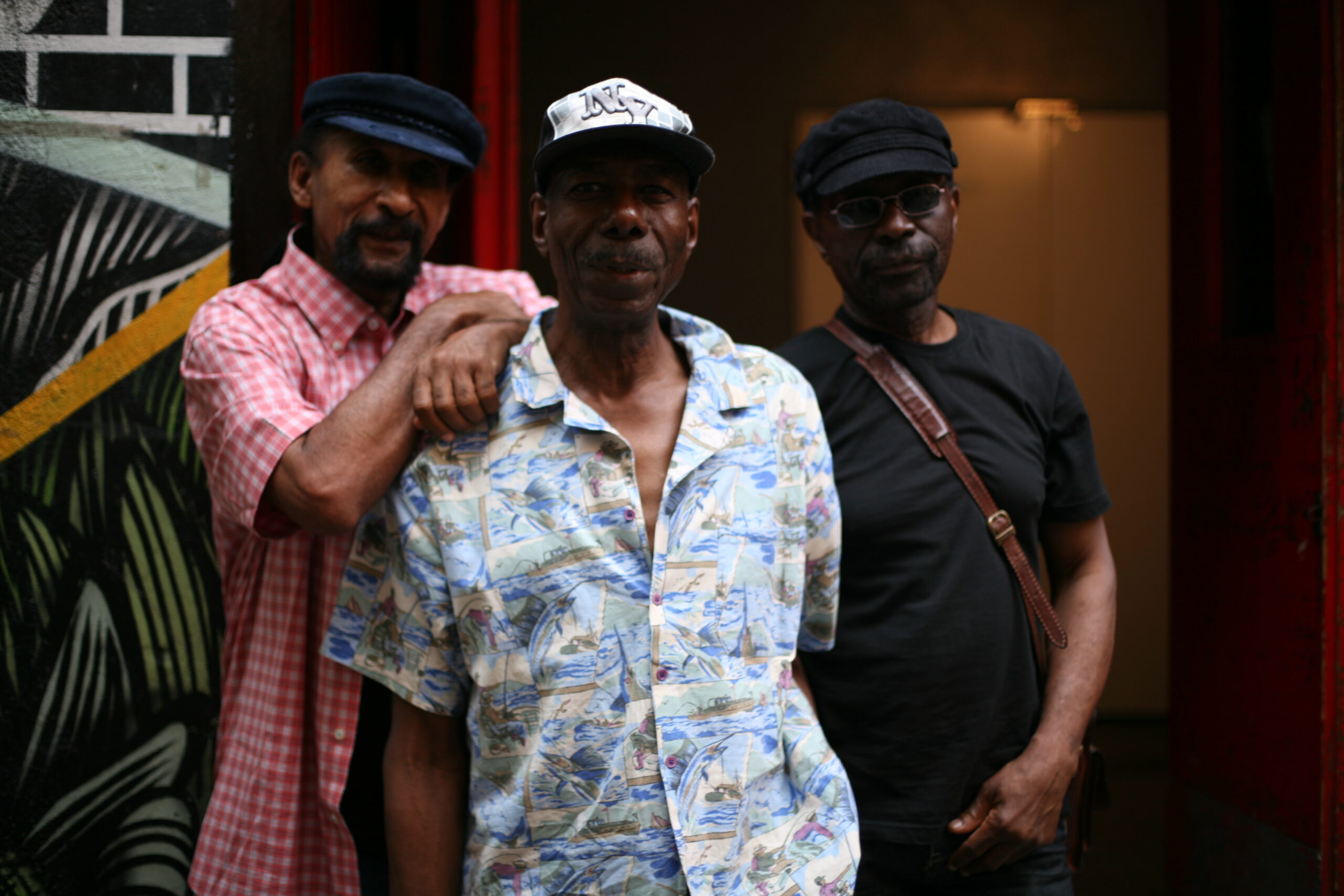
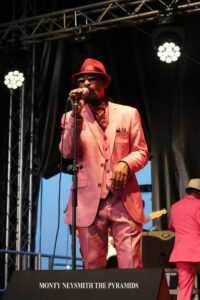


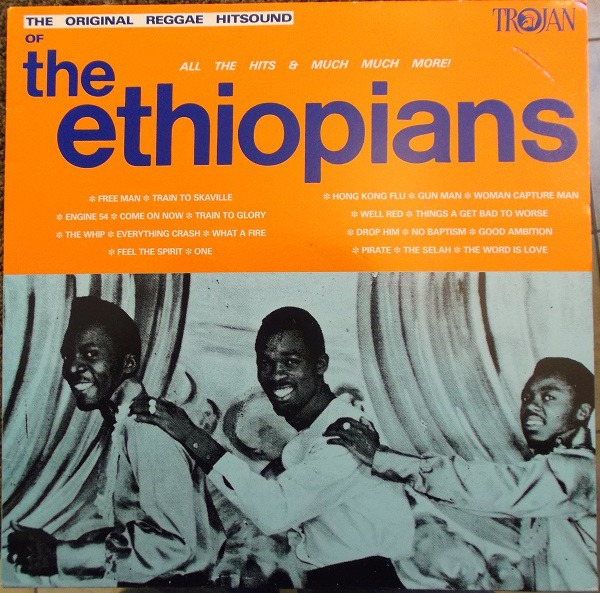
NOW BOOKING: THE LEGENDARY ETHIOPIANS: PIONEERS IN SKA, ROCKSTEADY & CLASSIC ROOTS REGGAE Entertainment with Ethiopian Music Production “The Ethiopians” (Originally “The Ethiopian Children”) were one of Jamaica’s most influential vocal groups during the golden age of Jamaican music, not only did the original quartet (Leonard Dillon, Wally Booker, Harold Bishop & Neville Duncan) spearhead the transition between Ska and Rocksteady, Dillon’s heavily Rastafarian lyrics also paved the way for the socially conscious Roots Reggae era that was to come. Neville Duncan was born in Port Antonio, Jamaica August 5, 1949. It was during his High School years that he met Harold Bishop (aka Junior). His uncle Arbry Walters (aka Tony Valdes) had a dance group called Tony Valdes and Company. This group consisted of the late Alva Watts, keyboardist and professor of music the late Prof. Rex Nettleford, Neville Black, the late Cedrick Brooks, Abnor Horn and many more singers and Ballet dancers. From the age of seven Neville started traveling around Jamaica with his uncle’s dance company. In 1962 Neville Performed at the Jamaica Independence Celebration in Port Antonio with the dance company for the first time. In 1963 Neville Duncan’s uncle (Tony Valdes) put on a concert, this is where Neville met Leonard Dillon (aka Sparrow) and Wally Bucker (aka Wally B). They all sang covers as well as originals. After the concert Wally Bucker suggested they form a singing group called “Ethiopian Children”. The new group performed every where Neville’s uncle promoted a show, In 1966 the group name was changed to The Ethiopians.
Three classic songs from the group which ironically became huge hits after Neville left the group for the first time. “Everything crash”, “Bad to worse” and “Owner fi di yard” were written by Neville Duncan, Leonard Dillon and Harold Bishop. There were giants in the earth in those early days of SKA, Monty Morris, The Ethiopians, Ska-talites, Drumbago, Millie Smalls, Prince Buster, Stranger Cole, Doreen Shaffer; and also after that, when the sons & daughters of Ska came in unto the sons & daughters of Rocksteady, and they bore children: Classic Roots, Culture Reggae, Lovers Rock, Dub, Dancehall, Hip- hop, Reggaeton, Bluebeat and Dubstep unto to them, the same became mighty music which were descended from of old, music of renown. Incredibly today some of these legendary giants still walk the earth, such as Neville “Ethiopian” Duncan, his musical career encompasses the entire history of reggae from SKA, ROCKSTEADY to CLASSIC ROOTS REGGAE through a genuine and DIRECT MUSICAL LINEAGE. NEVILLE “ETHIOPIAN” DUNCAN is one of the ORIGINAL FOUNDING MEMBERS of the ETHIOPIANS,
As with many early Reggae artists uneducated in the skullduggery world of music. Writers were very often left off of the credits, and therefore been buried in time and no records or royalties paid.
He is now the current lead vocalist via direct MUSICAL SUCCESSION through the late great LEONARD “SPARROW” DILLON. The Ethiopians are connected to a DIRECT MUSICAL LINEAGE that goes back to LEONARD DILLON, MILLIE SMALLS, DRUMBAGO, JAH JERRY, TOMMY MCcCOOK, PRINCE BUSTER, SKA-TALITES, STRANGER COLE, ERNIE RANGLIN, DERRICK MORGAN, JIMMY CLIFF, THEOPHILIUS BECKFORD, ROLAND ALPHONSO, DON DRUMMONDS, LLOYED BREVETT, THE WAILERS, TOOTS & THE MAYTALS, JOHNNY MOORE, BYRON LEE & THE DRAGONAIRES, LLOYD KNIBBS and many more! Booking Agent subcultz@gmail.com +447-733-096571(Symond Lawes) Ethiopians

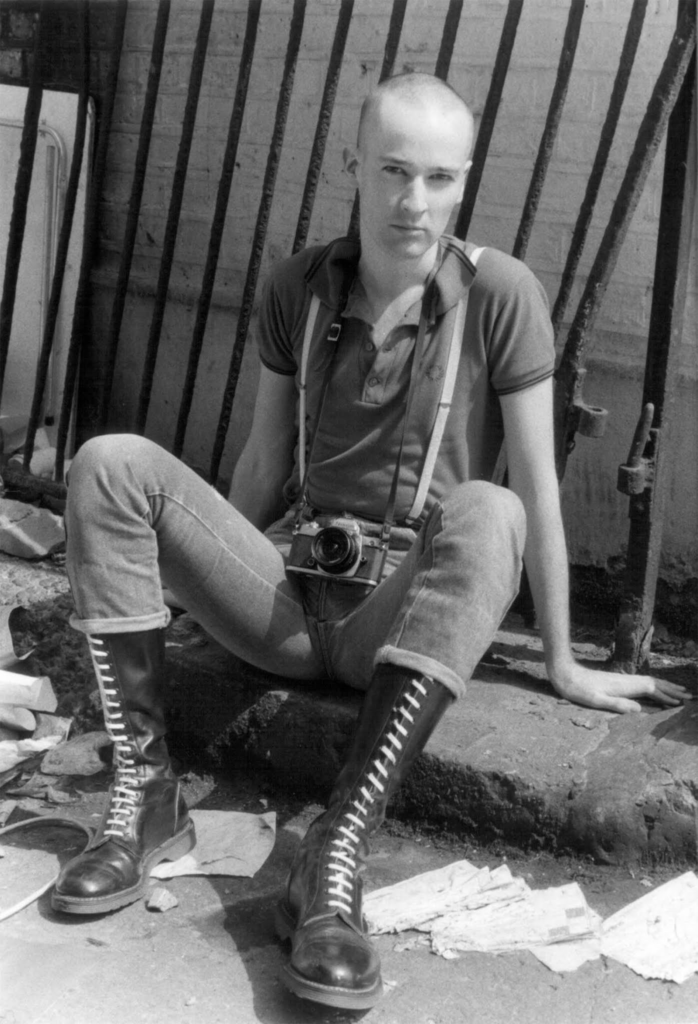
The skinhead subculture was born in England in the late 1960s as an offshoot of the mod culture. Skinheads were distinct from other British subcultures due to their uniform of boots, jeans, braces (suspenders), and the trademark shaved head.
Their style was an exaggerated version of the traditional unskilled laborer. One of the first scholars to research skinheads, sociologist Mike Brake, classified skinheads as a “traditional working-class delinquent subculture” and documented five traits that defined first-generation British skinheads: toughness and violence; football (soccer), ethnocentrism, Puritan work ethic; and a cynical worldview.
According to author Nick Knight, skinheads first appeared as a distinct youth subculture in 1968. He states in his book Skinhead, “In establishing their own style, the younger brothers of mods adopted certain elements of mod style, combined them with items from traditional working clothes, borrowed some influences from the West Indian blacks and became skinheads.”
Motivated by social alienation and working-class solidarity, skinheads were defined by their close-cropped or shaven heads (long hair was a liability in factory work and street fights) and working-class clothing such as Dr. Martens and steel toe work boots, braces, high rise jeans, and button-down collar shirts, usually slim fitting in check or plain.
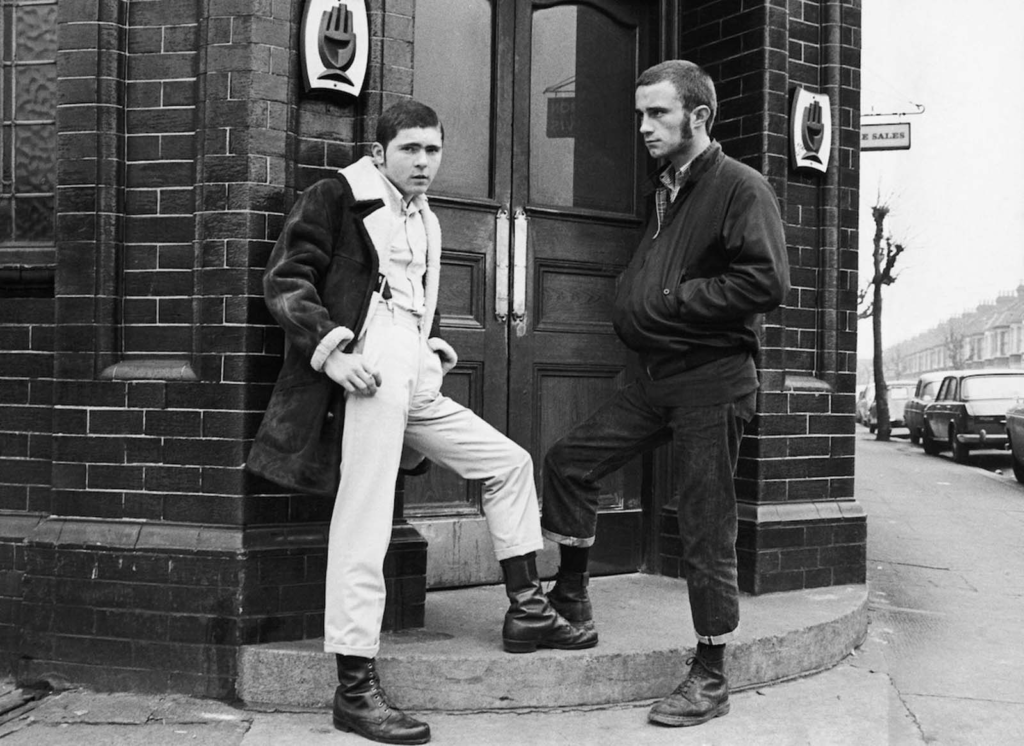
In England, there were two waves of the skinhead cult. From its inception, the skinhead subculture was largely based around music. The first group appeared in the late 1960s as an offshoot of the mod subculture and largely died out by 1972.
The second wave arrived in the late 1970s and early 1980s. These skinheads differed from the first generation, in that they were not influenced as much by mod as they were by the growing punk and 2Tone Ska scenes in London.
Punk lent itself to violence through its embrace of aggressive music and teenage angst. Skinheads reflected this new influence by combining the exaggerated imagery of the original skinhead style with punk.
They took the boots and suspenders and jeans of the late 1960s and added closser-cropped hair, bomber jackets, and tattoos. The popularity of the 2Tone movement helped spread the look of skinheads to all parts of the United Kingdom.
Symond Lawes, a British skinhead notes, “I became a skinhead and there was only one other skinhead in my estate in 1978. By the following year, every kid in England was a skinhead.”
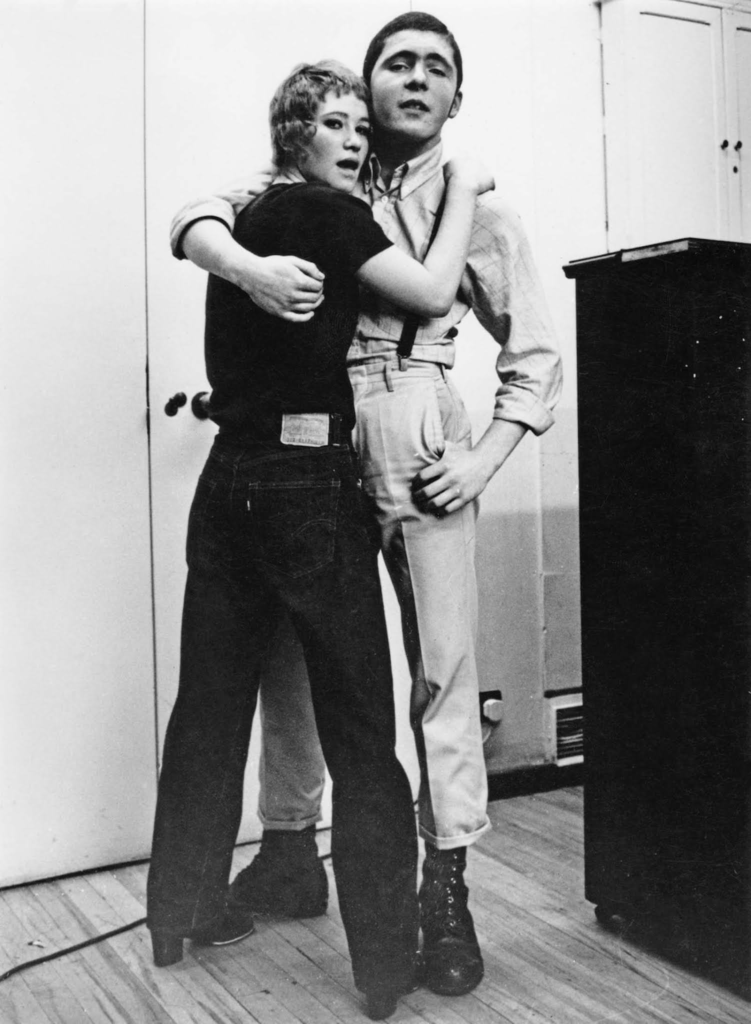
At the same time the subculture was growing, England was experiencing an influx of immigrants from India; the backlash to this wave of newcomers from the native British population was reflected in the skinhead subculture. Zeig Heiling and “Paki bashing” were sensationalized by the media.
The growth of the right-wing National Front and its recruitment of youth merely increased the amount of conflict present in the skinhead subculture. Punk shows and Ska shows were marred by skinhead violence. Even American newspapers covered the race riots that exploded in London in 1981.
While there is little doubt that North Americans, especially Canadians as part of the British Commonwealth, were exposed to skinhead subculture in the late 1960s and during the initial resurgence of this movement in 1978, it did not take hold as a youth cult in the United States until the arrival of punk.
Groups of youths in the early years of the American hardcore punk scene had shaved heads, but cannot be categorized as skinheads because they did not consciously adopt the lifestyle or dress that defines the subculture. Eventually, American youths began to emulate the skinhead style that was seen in the United Kingdom.

During the early 1980s, political affiliations grew in significance and split the subculture, distancing the far right and left-wing strands, although many skinheads described themselves as apolitical.
As a pro-working class movement, skinhead culture attracted those with nationalist beliefs, including violently racist or neo-Nazi elements.
In Great Britain, the skinhead subculture became associated in the public eye with the membership of groups such as the National Front and the British Movement. By the 1990s, neo-Nazi skinhead movements existed across all of Europe and North America.
Nowadays, few organizations, such as Skinheads Against Racial Prejudice, are attempting to fight back against supremacist skinheads and honor the diverse and multicultural aspects of the original skinhead subculture.
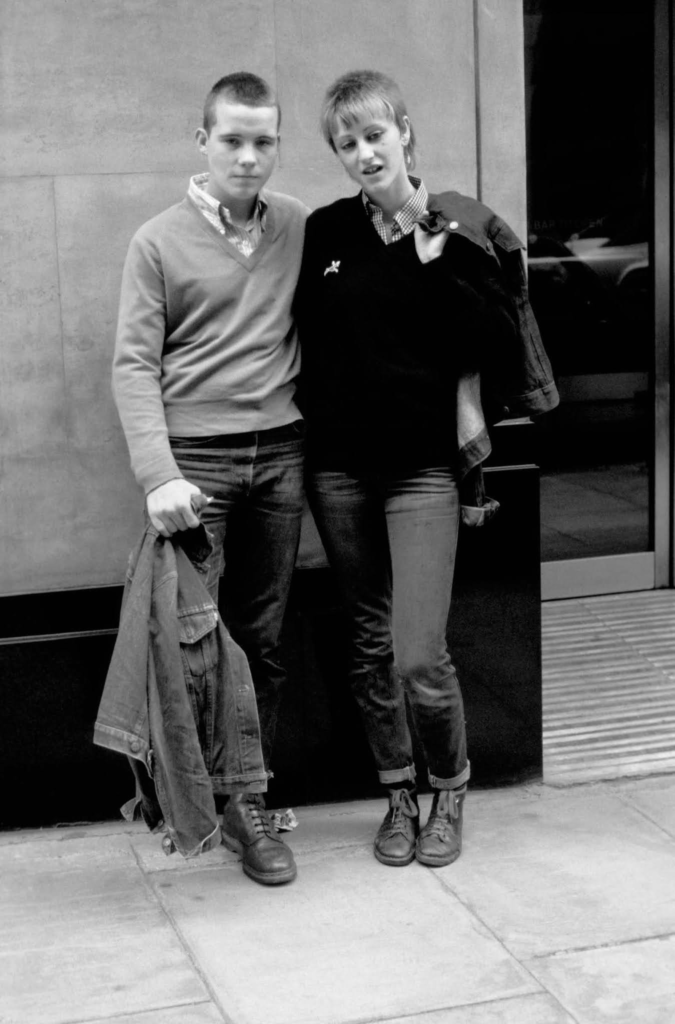
During the early 1980s, political affiliations grew in significance and split the subculture, distancing the far right and left-wing strands, although many skinheads described themselves as apolitical.
As a pro-working class movement, skinhead culture attracted those with nationalist beliefs, including violently racist or neo-Nazi elements.
In Great Britain, the skinhead subculture became associated in the public eye with the membership of groups such as the National Front and the British Movement. By the 1990s, neo-Nazi skinhead movements existed across all of Europe and North America.
Nowadays, few organizations, such as Skinheads Against Racial Prejudice, are attempting to fight back against supremacist skinheads and honor the diverse and multicultural aspects of the original skinhead subculture.
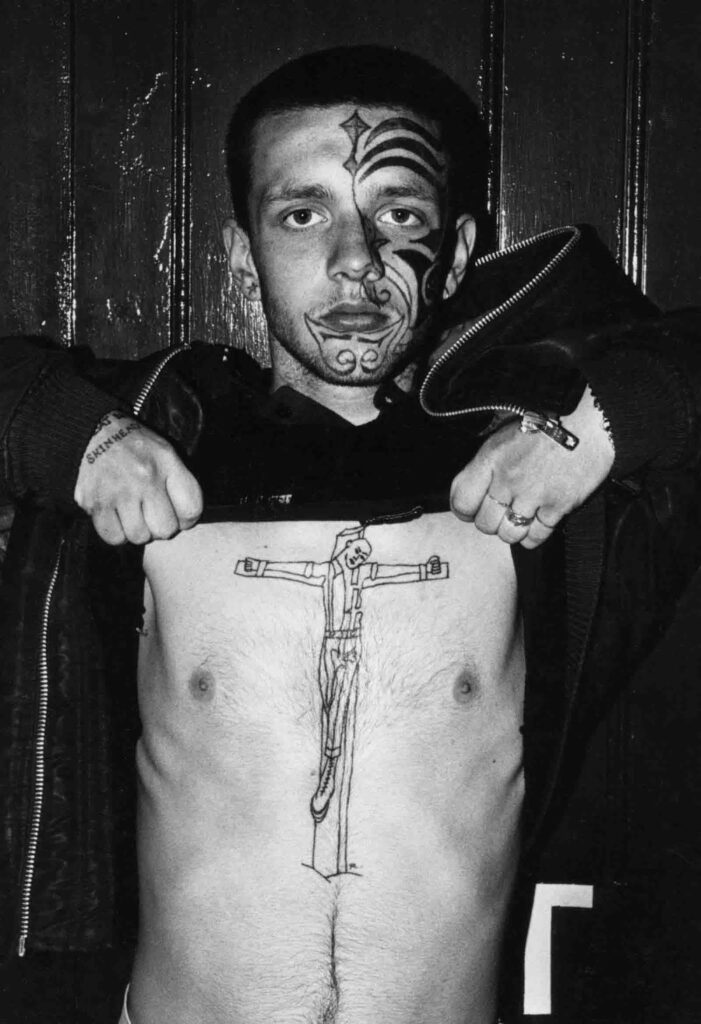
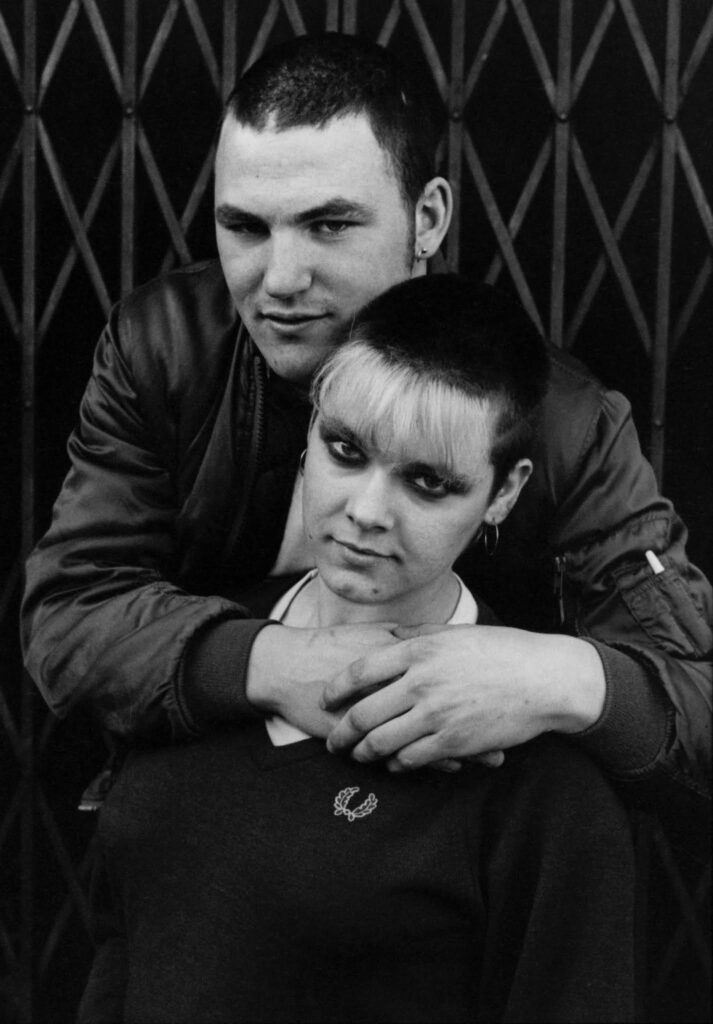
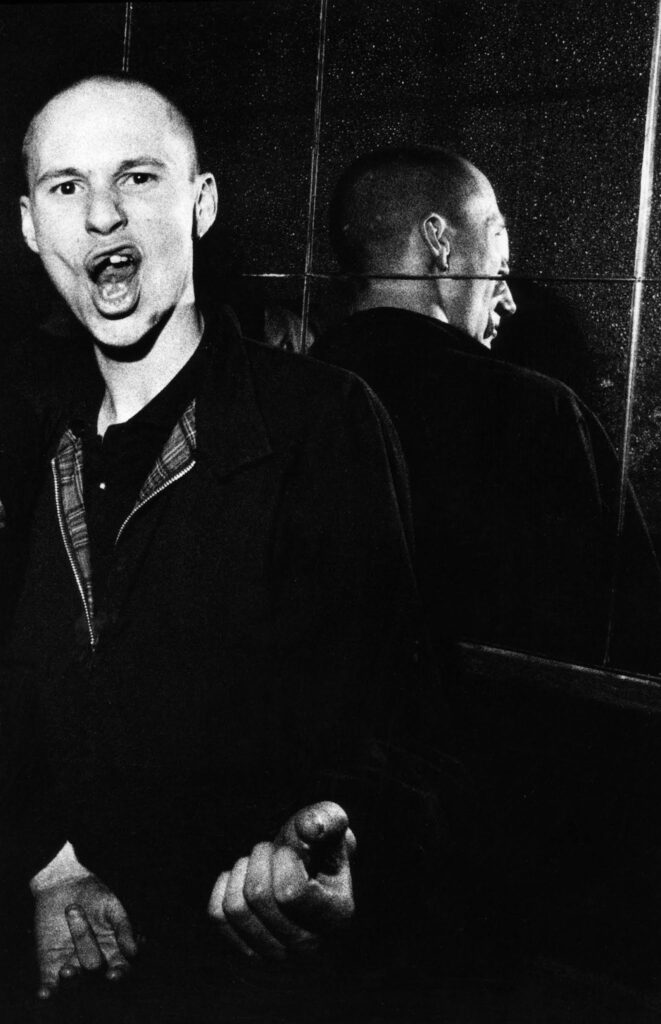
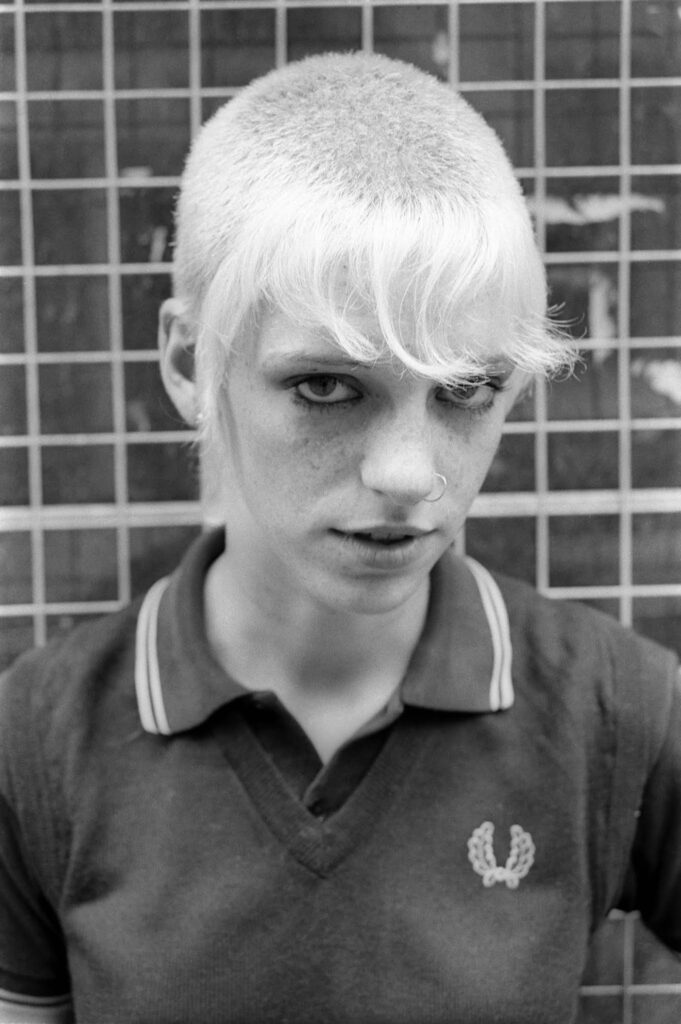
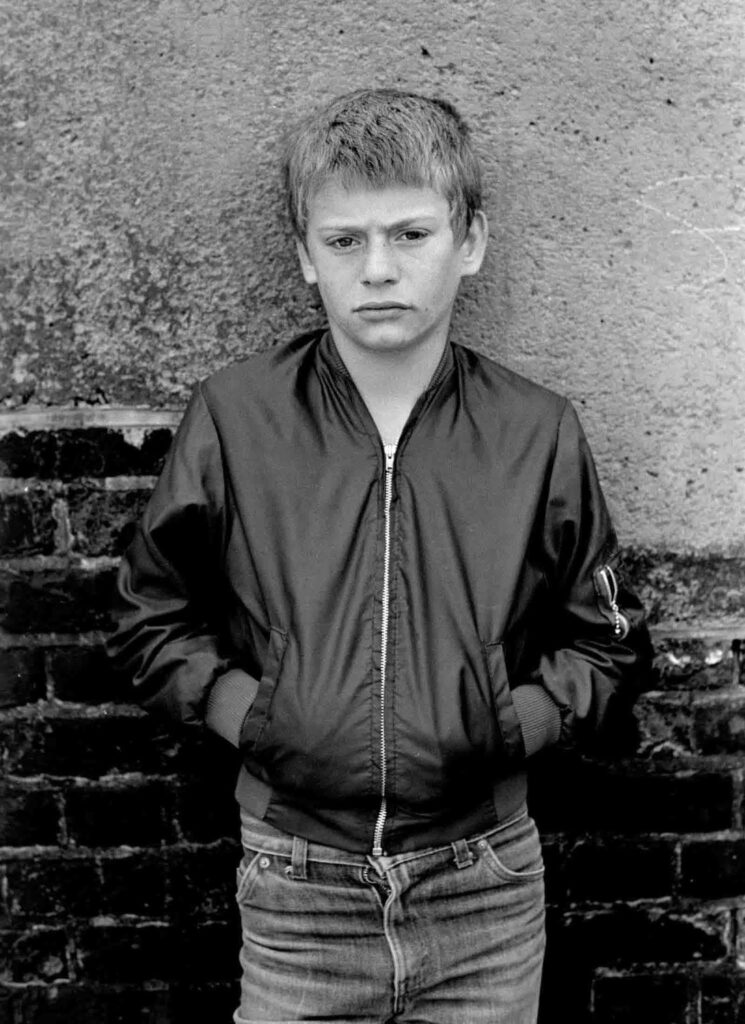
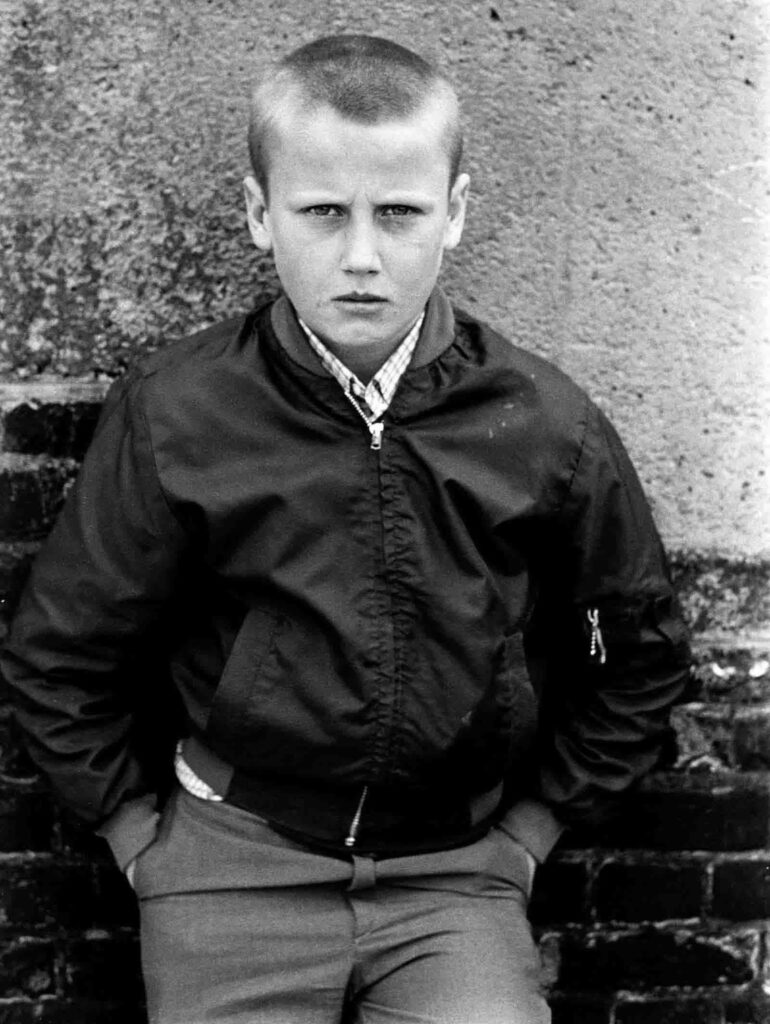
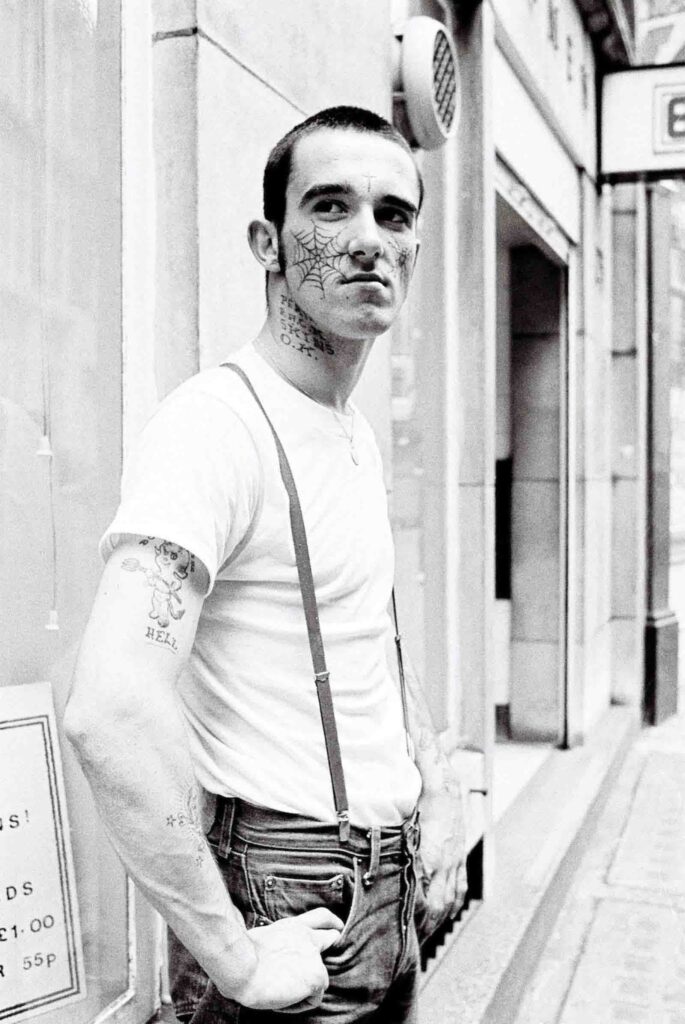
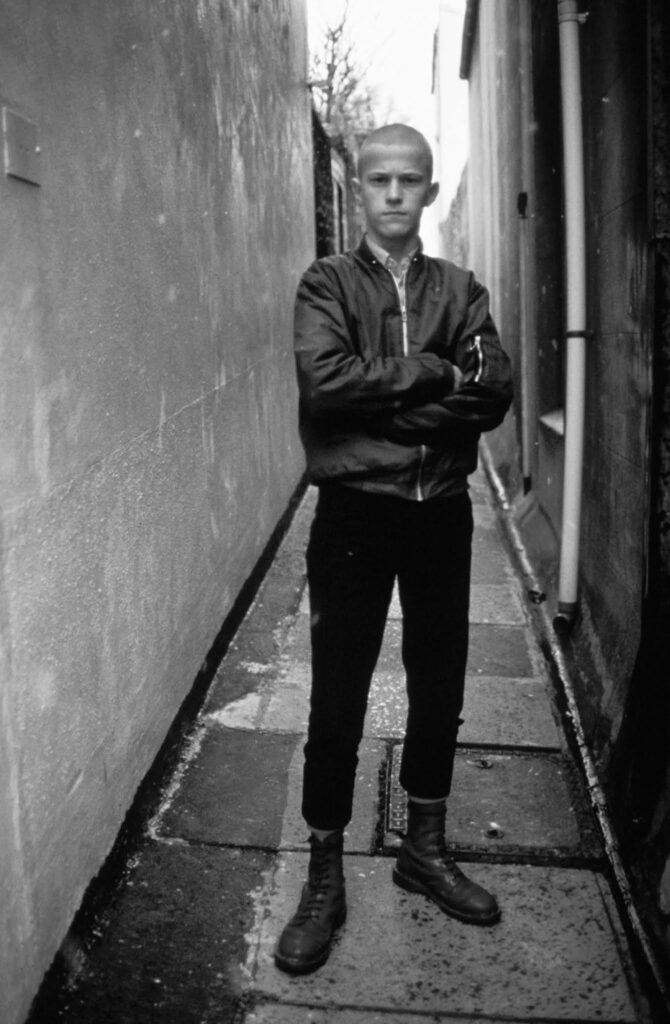
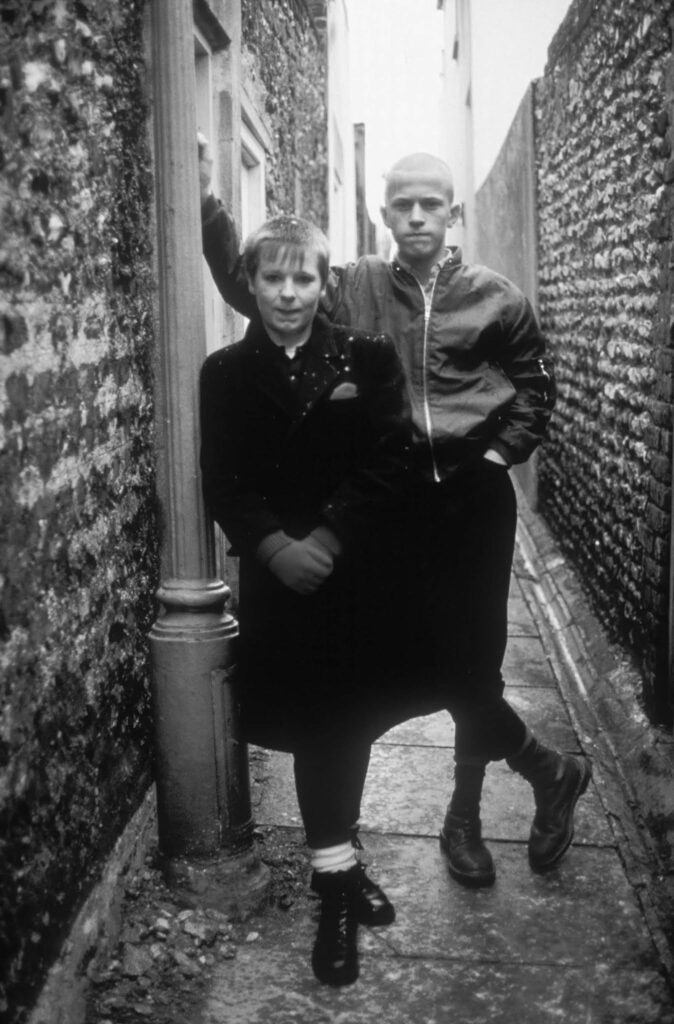
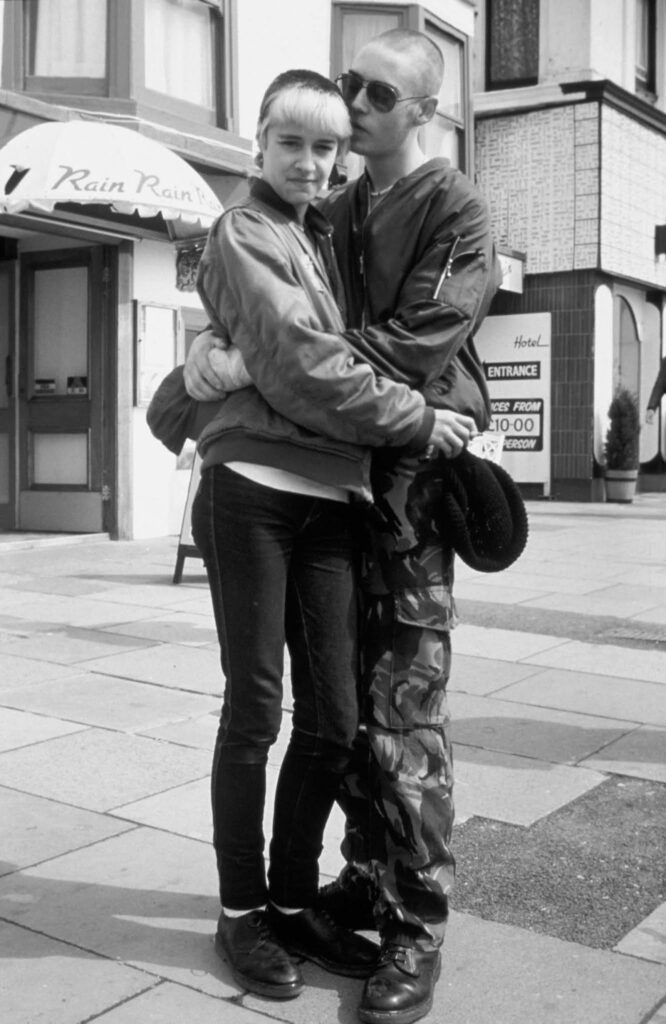
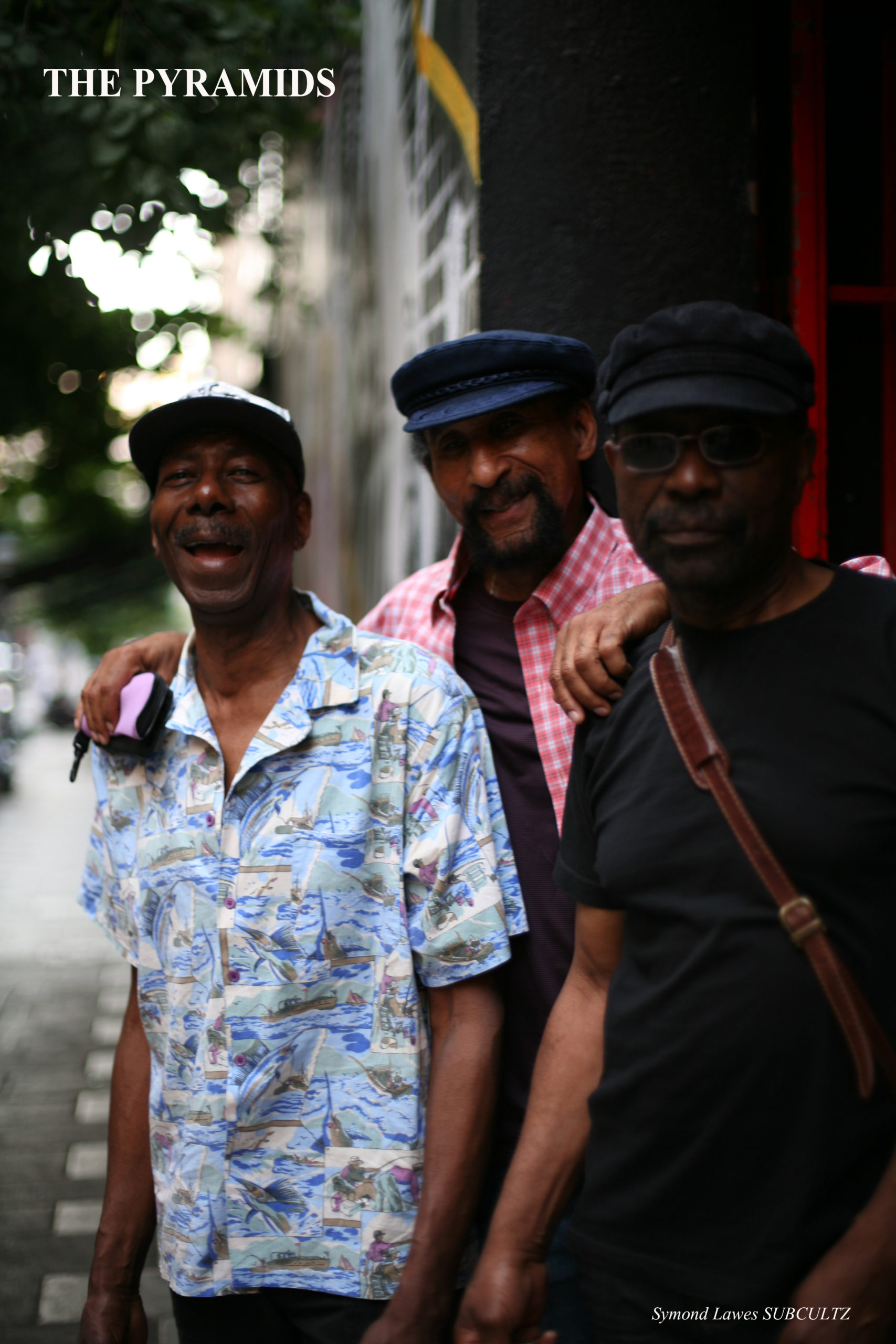
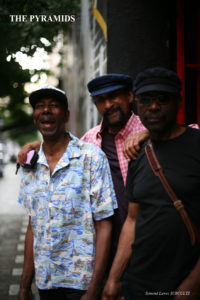
Symarip (also known at various stages of their career as The Bees, The Pyramids, Seven Letters and Zubaba) were a British ska and reggae band, originating in the late 1960s, when Frank Pitter and Michael Thomas founded the band as The Bees. The band’s name was originally spelled Simaryp, which is an approximate reversal of the word pyramids. Consisting of members from West Indies , Home of the legends of Jamaican Reggae Simaryp is widely marked as one of the first skinhead reggae bands, being one of the first to target skinheads as an audience. Their hits included “Skinhead Girl”, “Skinhead Jamboree” and “Skinhead Moonstomp“, the latter based on the Derrick Morgan song, “Moon Hop“.[2]
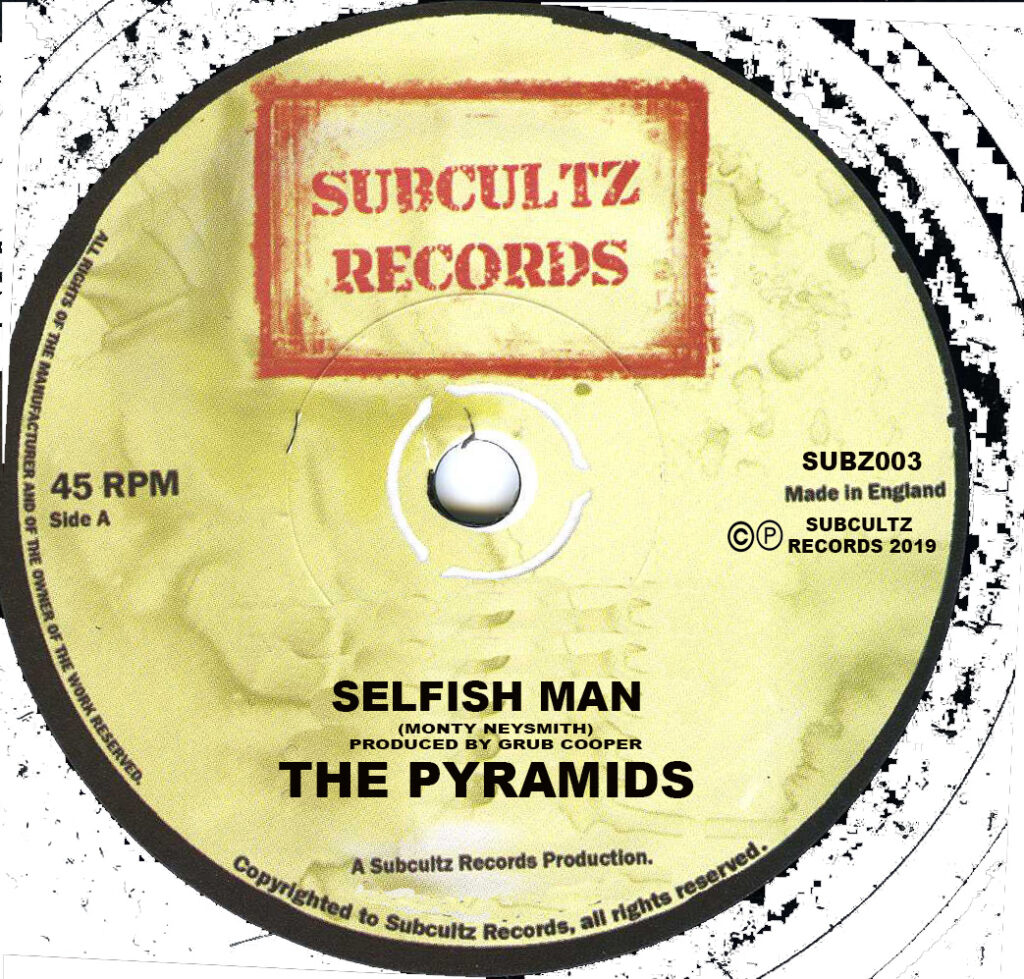
Landing as young immigrants into London from Jamaica in 1962 joining into the growing South London Reggae culture, spearheading the blending of black migrant and white London youth. Mods being the subculture of the time who followed RnB American Modern Jazz before the Skinheads replaced them towards the late 60’s, the band formed as the Bees to back leading singers Prince Buster and Laural Aitkin
Releasing the first and only pure Skinhead Reggae concept album Skinhead Moonstomp in 1970 with Trojan records
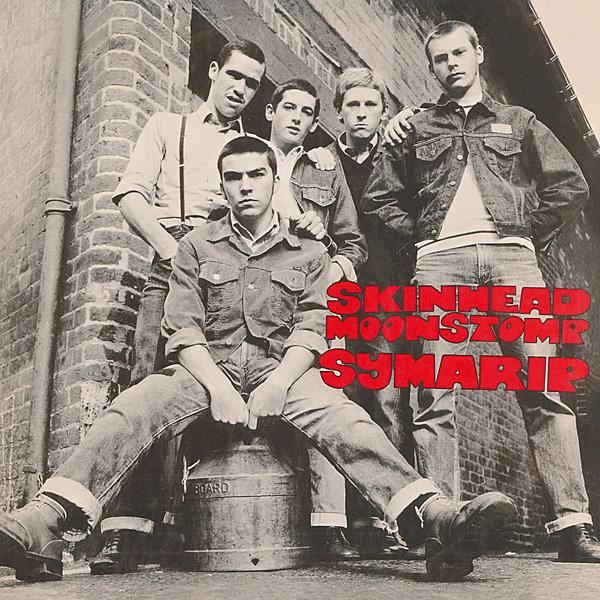
They moved to Germany in 1971, performing reggae and Afro-rock under the name Zubaba. In 1980, the single “Skinhead Moonstomp” was re-issued in the wake of the 2 Tone craze, hitting No. 54 on the UK Singles Chart. The band officially split in 1985 after releasing the album Drunk & Disorderly as The Pyramids. The album was released by Ariola Records and was produced by Stevie B.
Pitter and Ellis moved back to England, where Ellis continued performing as a solo artist, sometimes using the stage name ‘Mr. Symarip’. Mike Thomas met a Finnish woman while living in Switzerland and relocated to Finland doing the groundwork for the Finnish reggae culture through his band ‘Mike T. Saganor’. Monty Neysmith moved to the United States, where he toured as a solo artist.
In 2004, Trojan Records released a best of album including a new single by Neysmith and Ellis, “Back From the Moon”. In 2005, Neysmith and Ellis performed together at Club Ska in England, and a recording of the concert was released on Moon Ska Records as Symarip – Live at Club Ska. In April 2008, they headlined the Ska Splash Festival in Lincolnshire as Symarip, and later performed at the Endorse-It and Fordham Festivals. Pitter and Thomas now perform in a different band as Symarip Pyramid. Their Back From The Moon Tour 2008–2009 was with The Pioneers. In 2009, to celebrate the rebirth of the band and the reunion of the two original members, Trojan Records released a compilation album, Ultimate Collection. Pitter holds all copyright and trademark rights for the name ‘Symarip Pyramid’.
To book the band and any further information subcultz@gmail.com

Lead singer and Bass player of Mister Lizard. My very good friend and best friend of my sons was bashed by 5 guys with knuckle dusters last night in Berlin in Friedrichshain area. Completely Unprovoked attack other than him being a punk, and them casuals. He is a Northern Irish Punk, who cant speak German, and one of the nicest people I know
Adam was out with a few friends, when he was approached by an aggressive German who seemed to have a problem with Adams appearance, but not understanding the verbal confrontation Adam tried to communicate, but was then set upon by another four attackers armed with Knuckledusters
“We left a bar and walked around the corner and a guy started shouting at us but we ignored them, then he ran up to us and I turned around and that’s when his friend hit me with the knuckleduster, screaming Antifa scum. His associates then joined in fully armed in an unprovoked ferocious attack, leaving Adam unconscious with severe head wounds.
Adam is the singer and bass player with his band Mister Lizard and has only recently moved to Berlin to play in the active Punk music scene of the city. Also a lighting tech for bands that include Slipknot. He has no political ties, but was wearing a small crossed out swastika badge on his hat, very commonly worn by punks ever since the 1970’s.

Berlin Police were called but were not interested in persuing any form of investigation. However we are appealing to anyone with information to contact us. This is an attack once again on our subculture. Most young people that get involved in subculture will at some point come up against bigotry and abuse, sometimes turning violent like the tragic case of Sophie Lancaster killed for being a Goth.
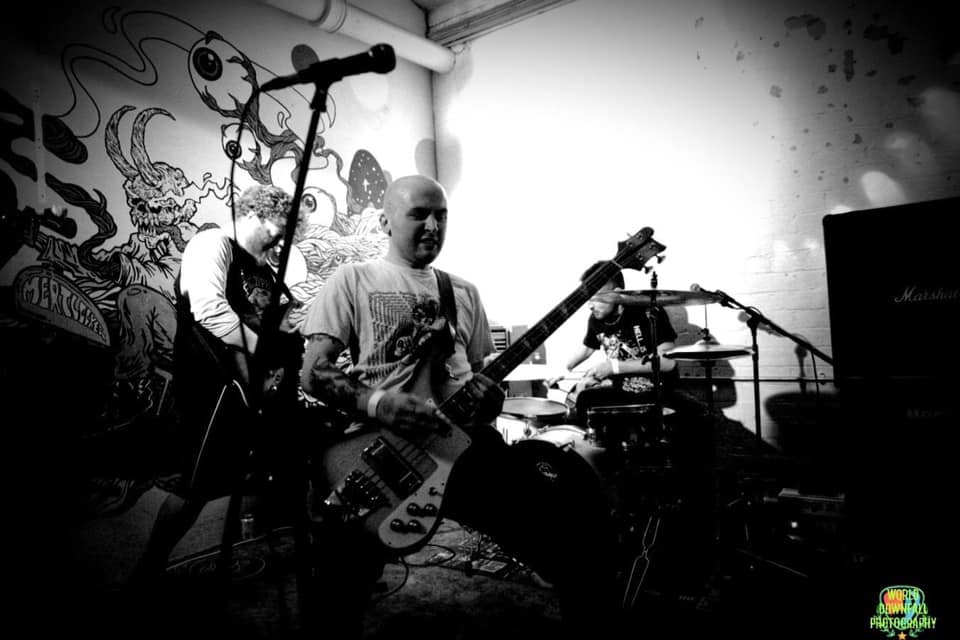


SOPHIE: Kicked to death in a park after being picked on by a gang because of her Goth clothing
Sophie Lancaster, 20, was kicked to death by two drunken 15-year-olds as she tried to stop a “merciless” gang battering her boyfriend unconscious in a park.
Three other youths were jailed for assaulting him.
Judge Anthony Russell QC said tough sentences were necessary to curb increasing attacks by youths roaming the streets.
Fuelled by cheap alcohol, a gang of yobs set upon Sophie and 21-year-old Robert Maltby just because they wore distinctive Goth clothing.
Judge Russell said: “This was feral thuggery of a kind that is quite unacceptable. It raises serious questions about the state of society which exists in this country at the beginning of a new millennium which was heralded with such optimism.”
He added: “At least wild animals when they hunt as a pack have a legitimate reason for doing so – to obtain food. You had none and your behaviour on this night degrades humanity itself.
“Regrettably, cases where gangs of youths attack others viciously, sometimes using weapons, sometimes using their own brute force through their feet, are becoming more prevalent.
“Where such crimes are proved, severe punishment will follow.
“I want the message to go out loud and clear that cowardly thugs who resort to kicking others senseless are sentencing themselves to lengthy custodial terms.”
Preston Crown Court heard how Sophie and Robert were attacked last August as they walked home through Stubbylee Park in Bacup, Lancs.
Brendan Harris, 15, felled Robert with a punch before the others set upon him “like a pack of wild animals”.
Harris told how – as Sophie cradled Robert on the ground and urged them to stop – Ryan Herbert, also 15 at the time, kicked Sophie’s head “as though he was volleying a football in full flight”.
The pair continued to stamp on her head before leaving the couple for dead.
Their injuries were so severe that paramedics could not tell them apart.
After the attack the gang bumped into a witness, who said they were behaving in a “giddy way, hyperactive and bouncing around doing silly things”.
He added: “It was as though they were boasting about what they had done.”
Herbert told him: “You wanna see them, they are a right mess.”
Sophie, a gap-year English degree student who enjoyed writing poetry, slipped into a coma and died two weeks later.
Robert, a Manchester University art student, survived horrific head injuries. But he has been left psychologically scarred and is afraid to leave his house.
In a statement he told the court: “I have regressed to a child-like state and I am finding the world a terrifying place.”
Sophie’s mother Sylvia, 52, told the court: “Their actions are so heinous I can’t bring myself to think about it.
“My daughter’s last moments on Earth must have been a living hell. Not only did she witness Robert being kicked and stamped upon, but she died not knowing whether Robert lived or died after the vicious attack on him.”
Harris, who was found guilty of murder, was jailed for life and must serve 18 years before he can be considered for parole.
Herbert, now 16, who admitted murder, was given life with a minimum of 16 years, three months. Neither showed any emotion as they were led away.
Joseph Hulme, 17, his brother Danny Hulme, 16, and Daniel Mallet, 17, were handed indeterminate sentences after admitting causing grievous bodily harm with intent by attacking Robert.
The Hulmes must serve a minimum five years and ten months each. Mallet must serve at least four years and four months.
Outside court, Mrs Lancaster, who works with problem children, said: “No sentence could ever be enough.
“I feel I have a life sentence. They will be out before the end of their 30s.”
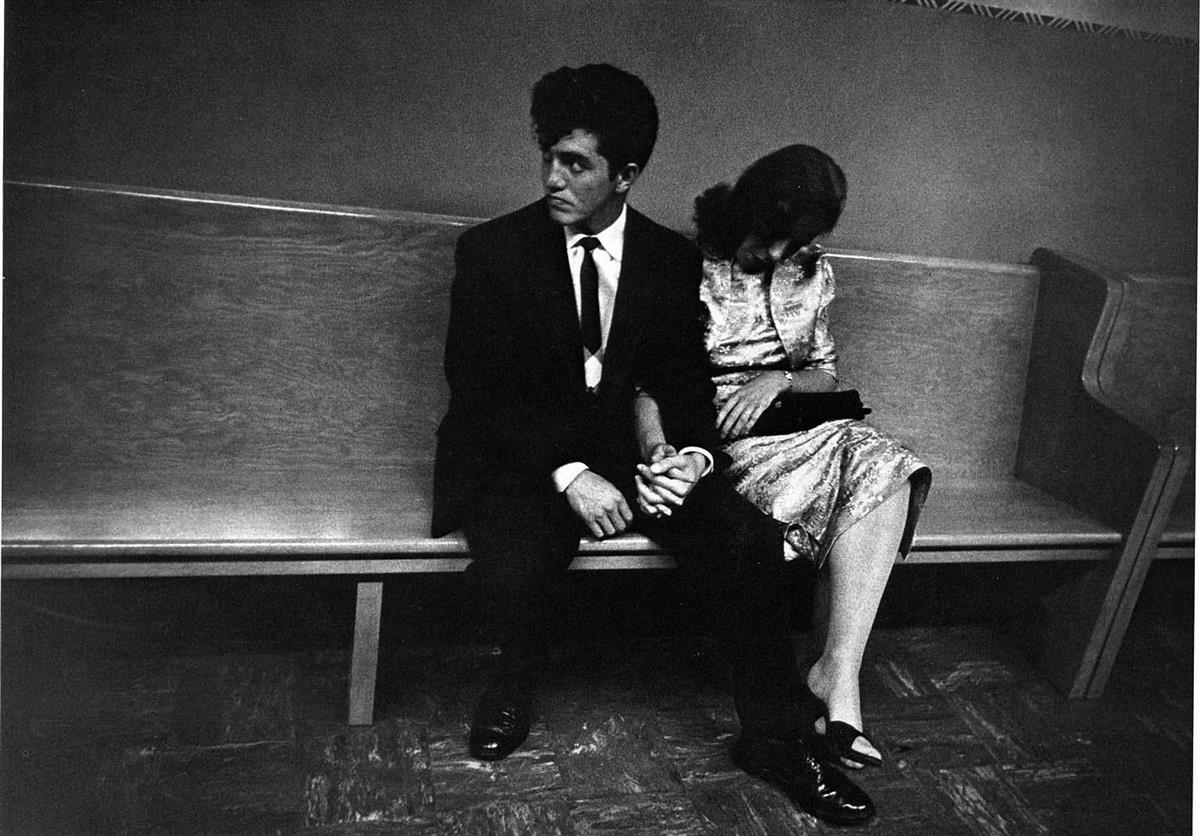
Norman Mailer’s inflammatory 1957 essay on the original “hipsters.”Norman Mailer June 20, 2007
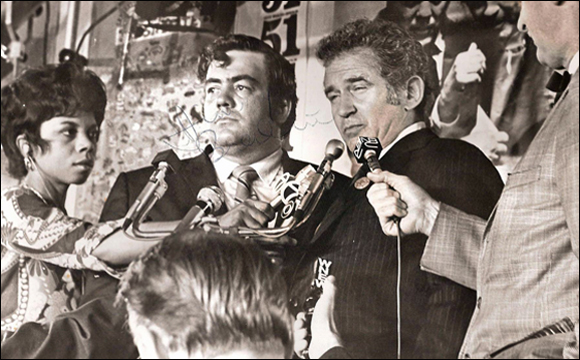
Norman Mailer ran in the Democratic primaries for mayor of New York City in 1969 with journalist Jimmy Breslin as his running mate (Breslin sought the nomination for President of the City Council). Their program called for New York City to secede from the state of New York. Political power was to devolve to the city’s neighborhoods. The Mailer-Breslin slogan was “The Other Guys are the Joke.” Dissent published many of Mailer’s controversial articles, including “The White Negro” (Fall 1957), which is reprinted below, and Mailer served on Dissent’s editorial board for more than three decades. The photograph above was taken by a seventeen-year-old campaign worker who had then never heard of Dissent, Mitchell Cohen, who now co-edits the magazine. Mailer died November 10th at the age of 84.
Our search for the rebels of the generation led us to the hipster. The hipster is an enfant terrible turned inside out. In character with his time, he is trying to get back at the conformists by lying low. . . . You can’t interview a hipster because his main goal is to keep out of a society which, he thinks, trying to make everyone over in its own image. He takes marijuana because it supplies him with experiences that can’t be shared with “squares.” He may affect a broad-brimmed hat or a zoot suit, but usually he prefers to skulk unmarked. The hipster may be a jazz musician; he is rarely an artist, almost never a writer. He may earn his living as a petty criminal, a hobo, a carnival roustabout or a free-lance moving man in Greenwich Village, but some hipsters have found a safe refuge in the upper income brackets as television comics or movie actors. (The late James Dean, for one, was a hipster hero.) . . . it is tempting to describe the hipster in psychiatric terms as infantile, but the style of his infantilism is a sign of the times, he does not try to enforce his will on others, Napoleon-fashion, but contents himself with a magical omnipotence never disproved because never tested. . . . As the only extreme nonconformist of his generation, he exercises a powerful if underground appeal for conformists, through newspaper accounts of his delinquencies, his structureless jazz, and his emotive grunt words.—“Born 1930: The Unlost Generation” by Caroline Bird, Harper’s Bazaar, Feb. 1957
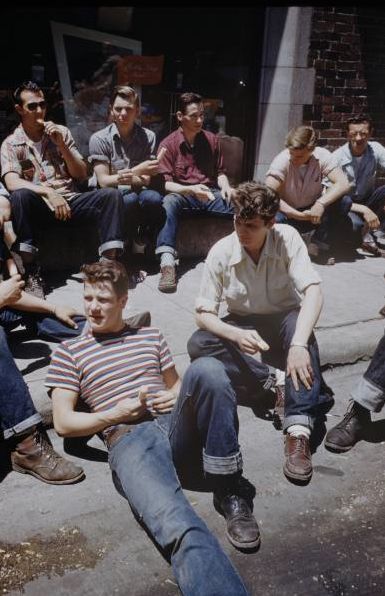
Probably, we will never be able to determine the psychic havoc of the concentration camps and the atom bomb upon the unconscious mind of almost everyone alive in these years. For the first time in civilized history, perhaps for the first time in all of history, we have been forced to live with the suppressed knowledge that the smallest facets of our personality or the most minor projection of our ideas, or indeed the absence of ideas and the absence of personality could mean equally well that we might still be doomed to die as a cipher in some vast statistical operation in which our teeth would be counted, and our hair would be saved, but our death itself would be unknown, unhonored, and unremarked, a death which could not follow with dignity as a possible consequence to serious actions we had chosen, but rather a death by deus ex machina in a gas chamber or a radioactive city; and so if in the midst of civilization—that civilization founded upon the Faustian urge to dominate nature by mastering time, mastering the links of social cause and effect—in the middle of an economic civilization founded upon the confidence that time could indeed be subjected to our will, our psyche was subjected itself to the intolerable anxiety that death being causeless, life was causeless as well, and time deprived of cause and effect had come to a stop.
The Second World War presented a mirror to the human condition which blinded anyone who looked into it. For if tens of millions were killed in concentration camps out of the inexorable agonies and contractions of super-states founded upon the always insoluble contradictions of injustice, one was then obliged also to see that no matter how crippled and perverted an image of man was the society he had created, it wits nonetheless his creation, his collective creation (at least his collective creation from the past) and if society was so murderous, then who could ignore the most hideous of questions about his own nature?
Worse. One could hardly maintain the courage to be individual, to speak with one’s own voice, for the years in which one could complacently accept oneself as part of an elite by being a radical were forever gone. A. man knew that when he dissented, he gave a note upon his life which could be called in any year of overt crisis. No wonder then that these have been the years of conformity and depression. A stench of fear has come out of every pore of American life, and we suffer from a collective failure of nerve. The only courage, with rare exceptions, that we have been witness to, has been the isolated courage of isolated people.
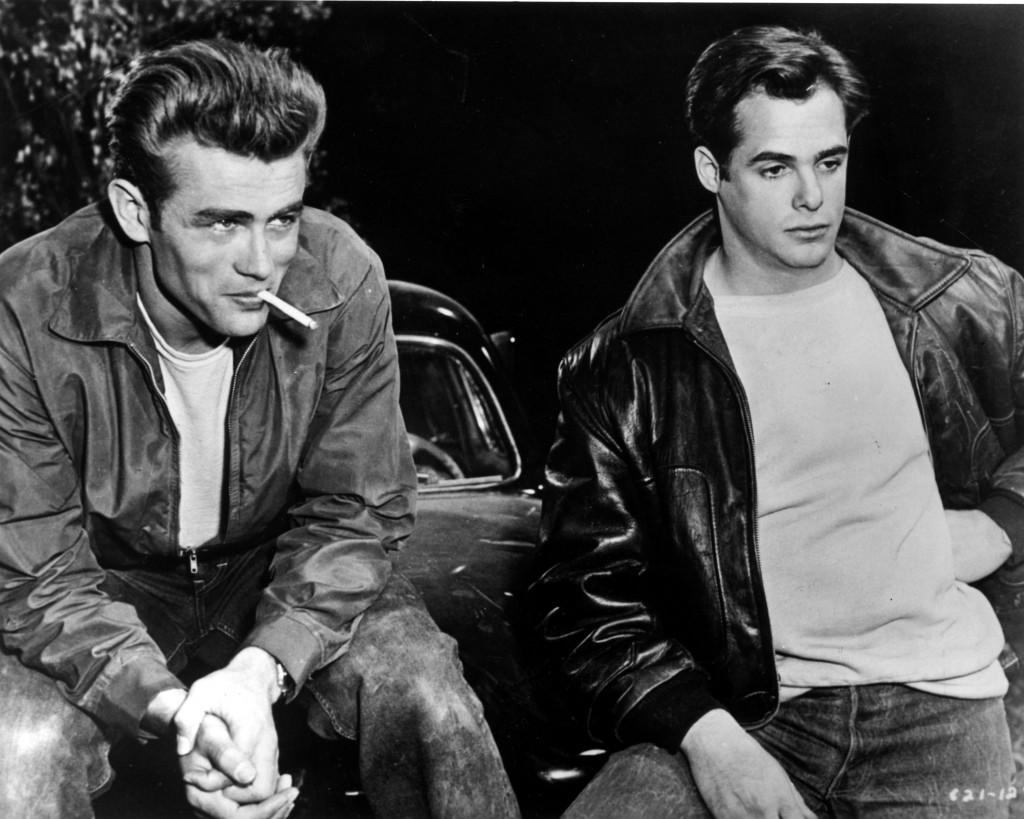
II
It is on this bleak scene that a phenomenon has appeared: the American existentialist—the hipster, the man who knows that if our collective condition is to live with instant death by atomic war, relatively quick death by the State as l’univers concentrationnaire, or with a slow death by conformity with every creative and rebellious instinct stifled (at what damage to the mind and the heart and the liver and the nerves no research foundation for cancer will discover in a hurry) , if the fate of twentieth century man is to live with death from adolescence to premature senescence, why then the only life-giving answer is to accept the terms of death, to live with death as immediate danger, to divorce oneself from society, to exist without roots, to set out on that uncharted journey into the rebellious imperatives of the self. In short, whether the life is criminal or not, the decision is to encourage the psychopath in oneself, to explore that domain of experience where security is boredom and therefore sickness, and one exists in the present, in that enormous present which is without past or future, memory or planned intention, the life where a man must go until he is beat, where he must gamble with his energies through all those small or large crises of courage and unforeseen situations which beset his day, where he must be with it or doomed not to swing. The unstated essence of Hip, its psychopathic brilliance, quivers with the knowledge that new kinds of victories increase one’s power for new kinds of perception; and defeats, the wrong kind of defeats, attack the body and imprison one’s energy until one is jailed in the prison air of other people’s habits, other people’s defeats, boredom, quiet desperation, and muted icy self-destroying rage. One is Hip or one is Square (the alternative which each new generation coming into American life is beginning to feel) one is a rebel or one conforms, one is a frontiersman in the Wild West of American night life, or else a Square cell, trapped in the totalitarian tissues of American society, doomed willy-nilly to conform if one is to succeed.
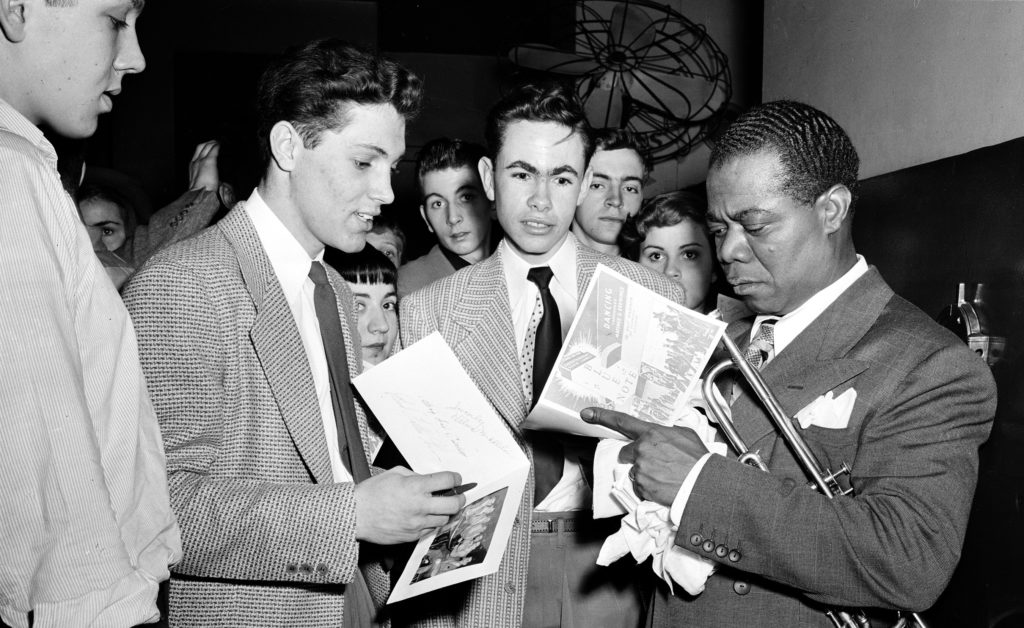
A totalitarian society makes enormous demands on the courage of men, and a partially totalitarian society makes even greater demands for the general anxiety is greater. Indeed if one is to be a man, almost any kind of unconventional action often takes disproportionate courage. So it is no accident that the source of Hip is the Negro for he has been living on the margin between totalitarianism and democracy for two centuries. But the presence of Hip as a working philosophy in the sub-worlds of American life is probably due to jazz, and its knife-like entrance into culture, its subtle but so penetrating influence on an avant-garde generation—that post-war generation of adventurers who (some consciously, some by osmosis) had absorbed the lessons of disillusionment and disgust of the Twenties, the Depression, and the War. Sharing a collective disbelief in the words of men who had too much money and controlled too many things, they knew almost as powerful a disbelief in the socially monolithic ideas of the single mate, the solid family and the respectable love life. If the intellectual antecedents of this generation can be traced to such separate influences as D. H. Lawrence, Henry Miller, and Wilhelm Reich, the viable philosophy of Hemingway fits most of their facts: in a bad world, as he was to say over and over again (while taking time out from his parvenu snobbery and dedicated gourmandise), in a bad world there is no love nor mercy nor charity nor justice unless a man can keep his courage, and this indeed fitted some of the facts. What fitted the need of the adventurer even more precisely was Hemingway’s categorical imperative that what made him feel good became therefore The Good.
So no wonder that in certain cities of America, in New York of course, and New Orleans, in Chicago and San Francisco and Los Angeles, in such American cities as Paris and Mexico, D.F., this particular part of a generation was attracted to what the Negro had to offer. In such places as Greenwich Village, a ménage-à-trois was completed—the bohemian and the juvenile delinquent came face-to-face with the Negro, and the hipster was a fact in American life. If marijuana was the wedding ring, the child was the language of Hip for its argot gave expression to abstract states of feeling which all could share, at least all who were Hip. And in this wedding of the white and the black it was the Negro who brought the cultural dowry. Any Negro who wishes to live must live with danger from his first day, and no experience can ever be casual to him, no Negro can saunter down a street with any real certainty that violence will not visit him on his walk. The cameos of security for the average white: mother and the home, lob and the family, are not even a mockery to millions of Negroes; they are impossible. The Negro has the simplest of alternatives: live a life of constant humility or ever-threatening danger. In such a pass where paranoia is as vital to survival as blood, the Negro had stayed alive and begun to grow by following the need of his body where he could. Knowing in the cells of his existence that life was war, nothing but war, the Negro (all exceptions admitted) could rarely afford the sophisticated inhibitions of civilization, and so he kept for his survival the art of the primitive, he lived in the enormous present, he subsisted for his Saturday night kicks, relinquishing the pleasures of the mind for the more obligatory pleasures of the body, and in his music he gave voice to the character and quality of his existence, to his rage and the infinite variations of joy, lust, languor, growl, cramp, pinch, scream and despair of his orgasm. For jazz is orgasm, it is the music of orgasm, good orgasm and bad, and so it spoke across a nation, it had the communication of art even where it was watered, perverted, corrupted, and almost killed, it spoke in no matter what laundered popular way of instantaneous existential states to which some whites could respond, it was indeed a communication by art because it said, “I feel this, and now you do too.”
So there was a new breed of adventurers, urban adventurers who drifted out at night looking for action with a black man’s code to fit their facts. The hipster had absorbed the existentialist synapses of the Negro, and for practical purposes could be considered a white Negro.
To be an existentialist, one must be able to feel oneself—one must know one’s desires, one’s rages, one’s anguish, one must be aware of the character of one’s frustration and know what would satisfy it. The over-civilized man can be an existentialist only if it is chic, and deserts it quickly for the next chic. To be a real existentialist (Sartre admittedly to the contrary) one must be religious, one must have one’s sense of the “purpose”—whatever the purpose may be—but a life which is directed by one’s faith in the necessity of action is a life committed to the notion that the substratum of existence is the search, the end meaningful but mysterious; it is impossible to live such a life unless one’s emotions provide their profound conviction. Only the French, alienated beyond alienation from their unconscious could welcome an existential philosophy without ever feeling it at all; indeed only a Frenchman by declaring that the unconscious did not exist could then proceed to explore the delicate involutions of consciousness, the microscopically sensuous and all but ineffable frissons of mental becoming, in order finally to create the theology of atheism and so submit that in a world of absurdities the existential absurdity is most coherent.
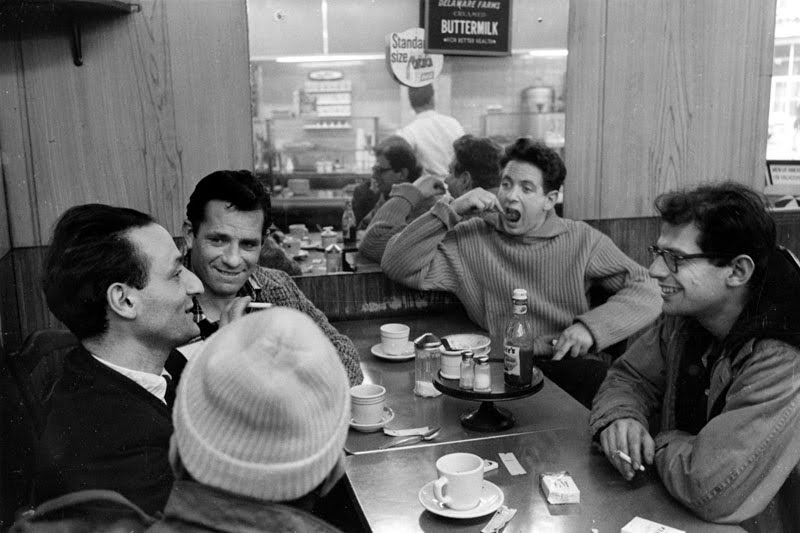
In the dialogue between the atheist and the mystic, the atheist is on the side of life, rational life, undialectical life—since he conceives of death as emptiness, he can, no matter how weary or despairing, wish for nothing but more life; his pride is that he does not transpose his weakness and spiritual fatigue into a romantic longing for death, for such appreciation of death is then all too capable of being elaborated by his imagination into a universe of meaningful structure and moral orchestration.
Yet this masculine argument can mean very little for the mystic. The mystic can accept the atheist’s description of his weakness, he can agree that his mysticism was a response to despair. And yet . . . and yet his argument is that he, the mystic, is the one finally who has chosen to live with death, and so death is his experience and not the atheist’s, and the atheist by eschewing the limitless dimensions of profound despair has rendered himself incapable to judge the experience. The real argument which the mystic must always advance is the very intensity of his private vision—his argument depends from the vision precisely because what was felt in the vision is so extraordinary that no rational argument, no hypotheses of ‘oceanic feelings” and certainly no skeptical reductions can explain away what has become for him the reality more real than the reality of closely reasoned logic. His inner experience of the possibilities within death is his logic. So, too, for the existentialist. And the psychopath. And the saint and the bullfighter and the lover. The common denominator for all of them is their burning consciousness of the present, exactly that incandescent consciousness which the possibilities within death has opened for them. There is a depth of desperation to the condition which enables one to remain in life only by engaging death, but the reward is their knowledge that what is happening at each instant of the electric present is good or bad for them, good or bad for their cause, their love, their action, their need.
It is this knowledge which provides the curious community of feeling in the world of the hipster, a muted cool religious revival to be sure, but the element which is exciting, disturbing, nightmarish perhaps, is that incompatibles have come to bed, the inner life and the violent life, the orgy and the dream of love, the desire to murder and the desire to create, a dialectical conception of existence with a lust for power, a dark, romantic, and yet undeniably dynamic view of existence for it sees every man and woman as moving individually through each moment of life forward into growth or backward into death.
III
It may be fruitful to consider the hipster a philosophical psychopath, a man interested not only in the dangerous imperatives of his psychopathy but in codifying, at least for himself, the suppositions on which his inner universe is constructed. By this premise the hipster is a psychopath, and yet not a psychopath but the negation of the psychopath for he possesses the narcissistic detachment of the philosopher, that absorption in the recessive nuances of one’s own motive which is so alien to the unreasoning drive of the psychopath. In this country where new millions of psychopaths are developed each year, stamped with the mint of our contradictory popular culture (where sex is sin and yet sex is paradise), it is as if there has been room already for the development of the antithetical psychopath who extrapolates from his own condition, from the inner certainty that his rebellion is just, a radical vision of the universe which thus separates him from the general ignorance, reactionary prejudice, and self-doubt of the more conventional psychopath. Having converted his unconscious experience into much conscious knowledge, the hipster has shifted the focus of his desire from immediate gratification toward that wider passion for future power which is the mark of civilized man. Yet with an irreducible difference. For Hip is the sophistication of the wise primitive in a giant jungle, and so its appeal is still beyond the civilized man. If there are ten million Americans who are more or less psychopathic (and the figure is most modest) there are probably not more than one hundred thousand men and women who consciously see themselves as hipsters, but their importance is that they are an elite with the potential ruthlessness of an elite, and a language most adolescents can understand instinctively for the hipster’s intense view of existence matches their experience and their desire to rebel.
Before one can say more about the hipster, there is obviously much to be said about the psychic state of the psychopath—or, clinically, the psychopathic personality. Now, for reasons which may be more curious than the similarity of the words, even many people with a psychoanalytical orientation often confuse the psychopath with the psychotic. Yet the terms are polar. The psychotic is legally insane, the psychopath is not; the psychotic is almost always incapable of discharging in physical acts the rage of his frustration, while the psychopath at his extreme is virtually as incapable of restraining his violence. The psychotic lives in so misty a world that what is happening at each moment of his life is not very real to him whereas the psychopath seldom knows any reality greater than the face, the voice, the being of the particular people among whom he may find himself at any moment. Sheldon and Eleanor Glueck describe him as follows:
The psychopath . . . can be distinguished from the person sliding into or clambering out of a true psychotic state by the long tough persistence of his anti-social attitude and behaviour and the absence of hallucinations, delusions, manic flight of ideas, confusion, disorientation, and other dramatic signs of psychosis.
The late Robert Lindner, one of the few experts on the subject, in his book Rebel Without A Cause—The Hypnoanalysis of a Criminal Psychopath presented part of his definition in this way:
. . . the psychopath is a rebel without a cause, an agitator without a slogan, a revolutionary without a program: in other words, his rebelliousness is aimed to achieve goals satisfactory to himself alone; lie is incapable of exertions for the sake of others. All his efforts, hidden under no matter what disguise, represent investments designed to satisfy his immediate wishes and desires
. . . The psychopath, like the child, cannot delay the pleasures of gratification; and tins trait is one of his underlying, universal characteristics. He cannot wait upon erotic gratification which convention demands should be preceded by the chase before the kill: he must rape. He cannot wait upon the development of prestige in society: his egoistic ambitions lead him to leap into headlines by daring performances. Like a red thread the predominance of this mechanism for immediate satisfaction runs through the history of every psychopath. It explains not only his behavior but also the violent nature of his acts.
Yet even Lindner who was the most imaginative and most sympathetic of the psychoanalysts who have studied the psychopathic personality was not ready to project himself into the essential sympathy— which is that the psychopath may indeed be the perverted and dangerous front-runner of a new kind of personality which could become the central expression of human nature before the twentieth century is over. For the psychopath is better adapted to dominate those mutually contradictory inhibitions upon violence and love which civilization has exacted of us, and if it be remembered that not every psychopath is an extreme case, and that the condition of psychopathy is present in a host of people including many politicians, professional soldiers, newspaper columnists, entertainers, artists, jazz musicians, call-girls, promiscuous homosexuals and half the executives of Hollywood, television, and advertising, it can be seen that there are aspects of psychopathy which already exert considerable cultural influence.
What characterizes almost every psychopath and part-psychopath is that they are trying to create a new nervous system for themselves. Generally we are obliged to act with a nervous system which has been formed from infancy, and which carries in the style of its circuits the very contradictions of our parents and our early milieu. Therefore, we are obliged, most of us, to meet the tempo of the present and the future with reflexes and rhythms which come from the past. It is not only the “dead weight of the institutions of the past” but indeed the inefficient and often antiquated nervous circuits of the past which strangle our potentiality for responding to new possibilities which might be exciting for our individual growth.
Through most of modern history, “sublimation” was possible: at the expense of expressing only a small portion of oneself, that small portion could be expressed intensely. But sublimation depends on a reasonable tempo to history. If the collective life of a generation has moved too quickly, the “past” by which particular men and women of that generation may function is not, let us say, thirty years old, but relatively a hundred or two hundred years old. And so the nervous system is overstressed beyond the possibility of such compromises as sublimation, especially since the stable middle-class values so prerequisite to sublimation have been virtually destroyed in our time, at least as nourishing values free of confusion or doubt. In such a crisis of accelerated historical tempo and deteriorated values, neurosis tends to be replaced by psychopathy, and the success of psychoanalysis (which even ten years ago gave promise of becoming a direct major force) diminishes because of its inbuilt and characteristic incapacity to handle patients more complex, more experienced, or more adventurous than the analyst himself. In practice, psychoanalysis has by now become all too often no more than a psychic blood-letting. The patient is not so much changed as aged, and the infantile fantasies which he is encouraged to express are condemned to exhaust themselves against the analyst’s non-responsive reactions. The result for all too many patients is a diminution, a “tranquilizing” of their most interesting qualities and vices. The patient is indeed not so much altered as worn out—less bad, less good, less bright, less willful, less destructive, less creative. He is thus able to conform to that contradictory and unbearable society which first created his neurosis. He can conform to what he loathes because he no longer has the passion to feel loathing so intensely.
The psychopath is notoriously difficult to analyze because the fundamental decision of his nature is to try to live the infantile fantasy, and in this decision (given the dreary alternative of psychoanalysis) there may be a certain instinctive wisdom. For there is a dialectic to changing one’s nature, the dialectic which underlies all psychoanalytic method: it is the knowledge that if one is to change one’s habits, one must go back to the source of their creation, and so the psychopath exploring backward along the road of the homosexual, the orgiast, the drug-addict, the rapist, the robber and the murderer seeks to find those violent parallels to the violent and often hopeless contradictions he knew as an infant and as a child. For if he has the courage to meet the parallel situation at the moment when he is ready, then he has a chance to act as he has never acted before, and in satisfying the frustration—if he can succeed—he may then pass by symbolic substitute through the locks of incest. In thus giving expression to the buried infant in himself, he can lessen the tension of those infantile desires and so free himself to remake a bit of his nervous system. Like the neurotic he is looking for the opportunity to grow up a second time, but the psychopath knows
instinctively that to express a forbidden impulse actively is far more beneficial to him than merely to confess the desire in the safety of a doctor’s room. The psychopath is ordinately ambitious, too ambitious ever to trade his warped brilliant conception of his possible victories in life for the grim if peaceful attrition of the analyst’s couch. So his associational journey into the past is lived out in the theatre of the present, and he exists for those charged situations where his senses are so alive that he can be aware actively (as the analysand is aware passively) of what his habits are, and how he can change them. The strength of the psychopath is that he knows (where most of us can only guess) what is good for him and what is bad for him at exactly those instants when an old crippling habit has become so attacked by experience that the potentiality exists to change it, to replace a negative and empty fear with an outward action, even if—and here I obey the logic of the extreme psychopath—even if the fear is of himself, and the action is to murder. The psychopath murders—if he has the courage—out of the necessity to purge his violence, for if he cannot empty his hatred then he cannot love, his being is frozen with implacable self-hatred for his cowardice. (It can of course be suggested that it takes little courage for two strong eighteen-year old hoodlums, let us say, to beat in the brains of a candy-store keeper, and indeed the act—even by the logic of the psychopath—is not likely to prove very therapeutic for the victim is not an immediate equal. Still, courage of a sort is necessary, for one murders not only a weak fifty-year old man but an institution as well, one violates private property, one enters into a new relation with the police and introduces a dangerous element into one’s life. The hoodlum is therefore daring the unknown, and so no matter how brutal the act it is not altogether cowardly)
At bottom, the drama of the psychopath is that he seeks love. Not love as the search for a mate, but love as the search for an orgasm more apocalyptic than the one which preceded it. Orgasm is his therapy— he knows at the seed of his being that good orgasm opens his possibilities and bad orgasm imprisons him. But in this search, the psychopath becomes an embodiment of the extreme contradictions of the society which formed his character, and the apocalyptic orgasm often remains as remote as the Holy Grail, for there are clusters and nests and ambushes of violence in his own necessities and in the imperatives and retaliations of the men and women among whom he lives his life, so that even as he drains his hatred in one act or another, so the conditions of his life create it anew in him until the drama of his movements bears a sardonic resemblance to the frog who climbed a few feet in the well only to drop back again.
Yet there is this to be said for the search after the good orgasm: when one lives in a civilized world, and still can enjoy none of the cultural nectar of such a world because the paradoxes on which civilization is built demands that there remain a cultureless and alienated bottom of exploitable human material, then the logic of becoming a sexual outlaw (if one’s psychological roots are bedded in the bottom)
is that one has at least a running competitive chance to be physically healthy so long as one stays alive. It is therefore no accident that psychopathy is most prevalent with the Negro. Hated from outside and therefore hating himself, the Negro was forced into the position of exploring all those moral wildernesses of civilized life which the Square automatically condemns as delinquent or evil or immature or morbid or self-destructive or corrupt. (Actually the terms have equal weight. Depending on the telescope of the cultural clique from which the Square surveys the universe, “evil” or “immature” are equally strong terms of condemnation.) But the Negro, not being privileged to gratify his self-esteem with the heady satisfactions of categorical condemnation, chose to move instead in that other direction where all situations are equally valid, and in the worst of perversion, promiscuity, pimpery, drug addiction, rape, razor-slash, bottle-break, what-have-you, the Negro discovered and elaborated a morality of the bottom, an ethical differentiation between the good and the bad in every human activity from the go-getter pimp (as opposed to the lazy one) to the relatively dependable pusher or prostitute. Add to this, the cunning of their language, the abstract ambiguous alternatives in which from the danger of their oppression they learned to speak (“Well. now, man, like I’m looking for a cat to turn me on ..“), add even more the profound sensitivity of the Negro jazzman who was the cultural mentor of a people, and it is not too difficult to believe that the language of Hip which evolved was an artful language, tested and shaped by an intense experience and therefore different in kind from white slang, as different as the special obscenity of the soldier which in its emphasis upon “ass” as the soul and “shit” as circumstance, was able to express the existential states of the enlisted man. What makes Hip a special language is that it cannot really be taught—if one shares none of the experiences of elation and exhaustion which it is equipped to describe, then it seems merely arch or vulgar or irritating. It is a pictorial language, but pictorial like non-objective art, imbued with the dialectic of small but intense change, a language for the microcosm, in this case, man, for it takes the immediate experiences of any passing man and magnifies the dynamic of his movements, not specifically but abstractly so that he is seen more as a vector in a network of forces than as a static character in a crystallized field. (Which, latter, is the practical view of the snob.) For example, there is real difficulty in trying to find a Hip substitute for “stubborn.” The best possibility I can come up with is: “That cat will never come off his groove, dad.” But groove implies movement, narrow movement but motion nonetheless. There is really no way to describe someone who does not move at all. Even a creep does move—if at a pace exasperatingly more slow than the pace of the cool cats.
IV
Like children, hipsters are fighting for the sweet, and their language is a set of subtle indications of their success or failure in the competition for pleasure. Unstated but obvious is the social sense that there is not nearly enough sweet for everyone. And so the sweet goes only to the victor, the best, the most, the man who knows the most about how to find his energy and how not to lose it. The emphasis is on energy because the psychopath and the hipster are nothing without it since they do not have the protection of a position or a class to rely on when they have overextended themselves. So the language of Hip is a language of energy, how it is found, how it is lost.
But let us see. I have jotted down perhaps a dozen words, the Hip perhaps most in use and most likely to last with the minimum of variation. The words are man, go, put down, make, beat, cool, swing, with it, crazy, dig, flip, creep, hip, square. They serve a variety of purposes, and the nuance of the voice uses the nuance of the situation to convey the subtle contextual difference. If the hipster moves through his night and through his life on a constant search with glimpses of Mecca in many a turn of his experience (Mecca being the apocalyptic orgasm) and if everyone in the civilized world is at least in some small degree a sexual cripple the hipster lives with the knowledge of how lie is sexually crippled and where he is sexually alive, and the faces of experience which life presents to him each day are engaged, dismissed or avoided as his need directs and his lifemanship makes possible. For life is a contest between people in which the victor generally recuperates quickly and the loser takes long to mend, a perpetual competition of colliding explorers in which one must grow or else pay more for remaining the same, (pay in sickness, or depression, or anguish for the lost opportunity) but pay or grow.
Therefore one finds words like go, and make it, and with it, and swing: “Go” with its sense that after hours or days or months. or years of monotony, boredom, and depression one has finally had one’s chance, one has amassed enough energy to meet an exciting opportunity with all one’s present talents for the flip (up or down) and so one is ready to go, ready to gamble. Movement is always to be preferred to inaction. In motion a man has a chance, his body is warm, his instincts are quick, and when the crisis comes, whether of love or violence, he can make it, he can win, he can release a little more energy for himself since he hates himself a little less, he can make a little better nervous systern, make it a little more possible to go again, to go faster next time and so make more and thus find more people with whom he can swing. For to swing is to communicate, is to convey the rhythms of one’s own being to a lover, a friend, or an audience, and—equally necessary— be able to feel the rhythms of their response. To swing with the rhythms of another is to enrich oneself— the conception of the learning process as dug by Hip is that one cannot really learn until one contains within oneself the implicit rhythm of the subject or the person. As an example, I remember once hearing a Negro friend have an intellectual discussion at a party for half an hour with a white girl who was a few years out of college. The Negro literally could not read or write, but he had an extraordinary ear and a fine sense of mimicry. So as the girl spoke, he would detect the particular formal uncertainties in her argument, and in a pleasant (if slightly Southern) English accent, he would respond to one or another facet of her doubts. When she would finish what she felt was a particularly well-articulated idea, he would smile privately and say, “other-direction . . . do you really believe in that?”
“Well . . . No,” the girl would stammer, “now that you get down to it, there is something disgusting about it to me,” and she would be off again for five more minutes.
Of course the Negro was not learning anything about the merits and demerits of the argument, hut he was learning a great deal about a type of girl he had never met before, and that was what he wanted. Being unable to read or write, he could hardly be interested in ideas nearly as much as in lifemanship, and so he eschewed any attempt to obey the precision or lack of precision in the girl’s language, and instead sensed her character (and the values of her social type) by swinging with the nuances of her voice.
So to swing is to be able to learn, and by learning take a step toward making it, toward creating. What is to be created is not nearly so important as the hipster’s belief that when he really makes it, he will be able to turn his hand to anything, even to self-discipline. What he must do before that is find his courage at the moment of violence, or equally make it in the act of love, find a little more of himself, create a little more between his woman and himself, or indeed between his mate and himself (since many hipsters are bisexual), but paramount, imperative, is the necessity to make it because in making it, one is making the new habit, unearthing the new talent which the old frustration denied.
Whereas if you goof (the ugliest word in Hip), if you lapse back into being a frightened stupid child, or if you flip, if you lose your control, reveal the buried weaker more feminine part of your nature, then it is more difficult to swing the next time, your ear is less alive, your bad and energy-wasting habits are further confirmed, you are farther away from being with it. But to be with it is to have grace, is to be closer to the secrets of that inner unconscious life which will nourish you if you can hear it, for you are then nearer to that God which every hipster believes is located in the senses of his body, that trapped, mutilated and nonetheless megalomaniacal God who is It, who is energy, life, sex, force, the Yoga’s prana, the Reichian’s orgone, Lawrence’s “blood,” Hemingway’s “good,” the Shavian life-force; “It”; God; not the God of the churches hut the unachievable whisper of mystery within the sex, the paradise of limitless energy and perception just beyond the next wave of the next orgasm.
To which a cool cat might reply, “Crazy, man!”
Because, after all, what I have offered above is an hypothesis, no more, and there is not the hipster alive who is not absorbed in his own tumultuous hypotheses. Mine is interesting, mine is way out (on the avenue of the mystery along the road to “It”) but still I am just one cat in a world of cool cats, and everything interesting is crazy, or at least so the Squares who do not know how to swing would say.
(And yet crazy is also the self-protective irony of the hipster. Living with questions and not with answers, he is so different in his isolation and in the far reach of his imagination from almost everyone with whom he deals in the outer world of the Square, and meets generally so much enmity, competition, and hatred in the world of Hip, that his isolation is always in danger of turning upon itself, and leaving him indeed just that, crazy.)
If, however, yon agree with my hypothesis, if you as a cat are way out too, and we are in the same groove (the universe now being glimpsed as a series of ever-extending radii from the center) why then you say simply, “I dig,” because neither knowledge nor imagination comes easily, it is buried in the pain of one’s forgotten experience, and so one must work to find it, one must occasionally exhaust oneself by digging into the self in order to perceive the outside. And indeed it is essential to dig the most, for if you do not dig you lose your superiority over the Square, and so you are less likely to be cool (to be in control of a situation because you have swung where the Square has not, or because you have allowed to come to consciousness a pain, a guilt, a shame or a desire which the other has not had the courage to face) . To be cool is to be equipped, and if you are equipped it is more difficult for the next cat who comes along to put you down. And of course one can hardly afford to be put down too often, or one is beat, one has lost one’s confidence, one has lost one’s will, one is impotent in the world of action and so closer to the demeaning flip of becoming a queer, or indeed closer to dying, and therefore it is even more difficult to recover enough energy to try to make it again, because once a cat is beat he has nothing to give, and no one is interested any longer in making it with him. This is the terror of the hipster—to be beat— because once the sweet of sex has deserted him, he still cannot give up the search. It is not granted to the hipster to grow old gracefully—he has been captured too early by the oldest dream of power, the gold fountain of Ponce de Leon, the fountain of youth where the gold is in the orgasm.
To be beat is therefore a flip, it is a situation beyond one’s experience, impossible to anticipate—which indeed in the circular vocabulary of Hip is still another meaning for flip, but then I have given just a few of the connotations of these words. Like most primitive vocabularies each word is a prime symbol and serves a dozen or a hundred functions of communication in the instinctive dialectic through which the hipster perceives his experience, that dialectic of the instantaneous differentials of existence in which one is forever moving forward into more or retreating into less.
V
It is impossible to conceive a new philosophy until one creates a new language, but a new popular language (while it must implicitly contain a new philosophy) does not necessarily present its philosophy overtly. It can be asked then what really is unique in the life-view of Hip which raises its argot above the passing verbal whimsies of the bohemian or the lumpenproletariat.
The answer would be in the psychopathic element of Hip which has almost no interest in viewing human nature, or better, in judging human nature from a set of standards conceived a priori to the experience, standards inherited from the past. Since Hip sees every answer as posing immediately a new alternative, a new question, its emphasis is on complexity rather than simplicity (such complexity that its language without the illumination of the voice and the articulation of the face and body remains hopelessly incommunicative). Given its emphasis on complexity, Hip abdicates from any conventional moral responsibility because it would argue that the result of out actions are unforeseeable, and so we cannot know if we do good or bad, we cannot even know (in the Joycean sense of the good and the bad) whether unforeseeable, and so we cannot know if we do good or bad, we cannot be certain that we have given them energy, and indeed if we could, there would still be no idea of what ultimately they would do with it.
Therefore, men are not seen as good or bad (that they are good-and-bad is taken for granted) but rather each man is glimpsed as a collection of possibilities, some more possible than others (the view of character implicit in Hip) and some humans are considered more capable than others of reaching more possibilities within themselves in less time, provided, and this is the dynamic, provided the particular character can swing at the right time. And here arises the sense of context which differentiates Hip from a Square view of character. Hip sees the context as generally dominating the man, dominating him because his character is less significant than the context in which he must function. Since it is arbitrarily five times more demanding of one’s energy to accomplish even an inconsequential action in an unfavorable context than a favorable one, man is then not only his character but his context, since the success or failure of an action in a given context reacts upon the character and therefore affects what the character will be in the next context. What dominates both character and context is the energy available at the moment of intense context.
Character being thus seen as perpetually ambivalent and dynamic enters then into an absolute relativity where there are no truths other than the isolated truths of what each observer feels at each instant of his existence. To take a perhaps unjustified metaphysical extrapolation, it is as if the universe which has usually existed conceptually as a Fact (even if the Fact were Berkeley’s God) but a ract which it was the aim of all science and philosophy to reveal, becomes instead a changing reality whose laws are remade at each instant by everything living, but most particularly man, man raised to a neo-medieval summit where the truth is not what one has felt yesterday or what one expects to feel tomorrow but rather truth is no more nor less than what one feels at each instant in the perpetual climax of the present.
What is consequent therefore is the divorce of man from his values, the liberation of the self from the Super-Ego of society. The only Hip morality (but of course it is an ever-present morality) is to do what one feels whenever and wherever it is possible, and—this is how the war of the Hip and the Square begins—to be engaged in one primal battle: to open the limits of the possible for oneself, for oneself alone because that is one’s need. Yet in widening the arena of the possible, one widens it reciprocally for others as well, so that the nihilistic fulfillment of each man’s desire contains its antithesis of human cooperation.
If the ethic reduces to Know Thyself and Be Thyself, what makes it radically different from Socratic moderation with its stern conservative respect for the experience of the past, is that the Hip ethic is immoderation, child-like in its adoration of the present (and indeed to respect the past means that one must also respect such ugly consequences of the past as the collective murders of the State) . It is this adoration of the present which contains the affirmation of Hip, because its ultimate logic surpasses even the unforgettable solution of the Marquis de Sade to sex, private property, and the family, that all men and women have absolute but temporary rights over the bodies of all other men and women—the nihilism of Hip proposes as its final tendency that every social restraint and category be removed, and the affirmation implicit in the proposal is that man would then prove to be more creative than murderous and so would not destroy himself. Which is exactly what separates Hip from the authoritarian philosophies which now appeal to the conservative and liberal temper—what haunts the middle of the Twentieth Century is that faith in man has been lost, and the appeal of authority has been that it would restrain us from ourselves. Hip, which would return us to ourselves, at no matter what price in individual violence, is the affirmation of the barbarian for it requires a primitive passion about human nature to believe that individual acts of violence are always to be preferred to the collective violence of the State; it takes literal faith in the creative possibilities of the human being to envisage acts of violence as the catharsis which prepares growth.
Whether the hipster’s desire for absolute sexual freedom contains any genuinely radical conception of a different world is of course another matter, and it is possible, since the hipster lives with his hatred, that many of them are the material for an elite of storm troopers ready to follow the first truly magnetic leader whose view of mass murder is phrased in a language which reaches their emotions. But given the desperation of his condition as a psychic outlaw, the hipster is equally a candidate for the most reactionary and most radical of movements, and so it is just as possible that many hipsters will come—if the crisis deepens—to a radical comprehension of the horror of society, for even as the radical has had his incommunicable dissent confirmed in his experience by precisely the frustration, the denied opportunities, and the bitter years which his ideas have cost him, so the sexual adventurer deflected from his goal by the implacable animosity of a society constructed to deny the sexual radical as well, may yet come to an equally bitter comprehension of the slow relentless inhumanity of the conservative power which controls him from without and from within. And in being so controlled, denied, and starved into the attrition of conformity, indeed the hipster may come to see that his condition is no more than an exaggeration of the human condition, and if he would be free, then everyone must be free. Yes, this is possible too, for the heart of Hip is its emphasis upon courage at the moment of crisis, and it is pleasant to think that courage contains within itself (as the explanation of its existence) some glimpse of the necessity of life to become more than it has been.
It is obviously not very possible to speculate with sharp focus on the future of the hipster. Certain possibilities must be evident, however, and the most central is that the organic growth of Hip depends on whether the Negro emerges as a dominating force in American life. Since the Negro knows more about the ugliness and danger of life than the White, it is probable that if the Negro can win his equality, he will possess a potential superiority, a superiority so feared that the fear itself has become the underground drama of domestic politics. Like all conservative political fear it is the fear of unforeseeable consequences, for the Negro’s equality would tear a profound shift into the psychology, the sexuality, and the moral imagination of every White alive.
With this possible emergence of the Negro, Hip may erupt as a psychically armed rebellion whose sexual impetus may rebound against the anti-sexual foundation of every organized power in America, and bring into the air such animosities, antipathies, and new conflicts of interest that the mean empty hypocrisies of mass conformity will no longer work. A time of violence, new hysteria, confusion and rebellion will then be likely to replace the time of conformity. At that time, if the liberal should prove realistic in his belief that there is peaceful room for every tendency in American life, then Hip would end by being absorbed as a colorful figure in the tapestry. But if this is not the reality, and the economic, the social, the psychological, and finally the moral crises accompanying the rise of the Negro should prove insupportable, then a time is coming when every political guide post will be gone, and millions of liberals will be faced with political dilemmas they have so far succeeded in evading, and with a view of human nature they do not wish to accept. To take the desegregation of the schools in the South as an example, it is quite likely that the reactionary sees the reality more closely than the liberal when he argues that the deeper issue is not desegregation but miscegenation. (As a radical I am of course facing in the opposite direction from the White Citizen’s Councils—obviously I believe it is the absolute human right of the Negro to mate with the White, and matings there will undoubtedly be, for there will be Negro high school boys brave enough to chance their lives.) But for the average liberal whose mind has been dulled by the committee-ish cant of the professional liberal, miscegenation is not an issue because he has been told that the Negro does not desire it. So, when it comes, miscegenation will be a terror, comparable perhaps to the derangement of the American Communists when the icons to Stalin came tumbling down. The average American Communist held to the myth of Stalin for reasons which had little to do with the political evidence and everything to do with their psychic necessities. In this sense it is equally a psychic necessity for the liberal to believe that the Negro and even the reactionary Southern White eventually and fundamentally people like himself, capable of becoming good liberals too if only they can be reached by good liberal reason. What the liberal cannot bear to admit is the hatred beneath the skin of a society so unjust that the amount of collective violence buried in the people is perhaps incapable of being contained, and therefore if one wants a better world one does well to hold one’s breath, for a worse world is bound to come first, and the dilemma may well be this:
given such hatred, it must either vent itself nihilistically or become turned into the cold murderous liquidations of the totalitarian state.
VI
No matter what its horrors the Twentieth Century is a vastly exciting century for its tendency is to reduce all of life to its ultimate alternatives. One can well wonder if the last war of them all will be between the blacks and the whites, or between the women and the men, or between the beautiful and ugly, the pillagers and managers, or the rebels and the regulators. Which of course is carrying speculation beyond the point where speculation is still serious, and yet despair at the monotony and bleakness of the future have become so engrained in the radical temper that the radical is in danger of abdicating from all imagination. What a man feels is the impulse for his creative effort, and if an alien but nonetheless passionate instinct about the meaning of life has come so unexpectedly from a virtually illiterate people, come out of the most intense conditions of exploitation, cruelty, violence, frustration, and lust, and yet has succeeded as an instinct in keeping this tortured people alive, then it is perhaps possible that the Negro holds more of the tail of the expanding elephant of truth than the radical, and if this is so, the radical humanist could do worse than to and brood upon the phenomenon. For if a revolutionary time should come again, there would be a crucial difference if someone had already delineated a neo-Marxian calculus aimed at comprehending every circuit and process of society from ukase to kiss as the communications of human energy—a calculus capable of translating the economic relations of man into his psychological relations and then back again, his productive relations thereby embracing his sexual relations as well, until the
crises of capitalism in the Twentieth Century would yet be understood as the unconscious adaptations of a society to solve its economic imbalance at the expense of a new mass psychological imbalance. It is almost beyond the imagination to conceive of a work in which the drama of human energy is engaged, and a theory of its social currents and dissipations, its imprisonments, expressions, and tragic wastes are fitted into some gigantic synthesis of human action where the body of Marxist thought, and particularly the epic grandeur of Das Kapital (that first of the major psychologies to approach the mystery of social cruelty so simply and practically as to say that we are a collective body of humans whose life-energy is wasted, displaced, and procedurally stolen as it passes from one of us to another)—where particularly the epic grandeur of Das Kapital would find its place in an even more Godlike view of human justice and injustice, in some more excruciating vision of those intimate and institutional processes which lead to our creations and disasters, our growth, our attrition, and our rebellion.
Norman Mailer is a longtime contributer and former board member of Dissent.
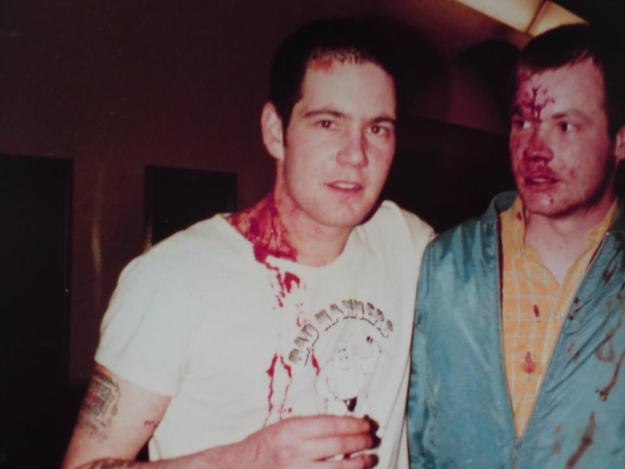
Skinheads: the cult of trouble
Skinheads streaming out of Camden Town underground tonight look hard and they know it. The crop is the style, but it can also be the weapon: it’ll nut you if you look too long or you don’t step out of the way, if you’re wearing the wrong uniform or follow the wrong team. Outside the Electric Ballroom four Special Patrol Group men stand staring at the line of skinheads waiting to pay £3.00 to see UB40, staring at the anti-fashion parade.
The smart look is sta-press trousers, Ben Sherman shirts and polished Dr Martens. The tougher look is a short-sleeved shirt displaying the tattoos, bleached Levis with the braces hanging loose round the legs. The real hard cases have tattoos on their faces. One has a small cross on each cheek. Most of the girl skins look really young, about 13, and are dressed like the boys in shirts, jeans and boots. But some wear short skirts, like one black skinhead girl who’s got brown monkey boots over black fishnet tights.
The police point and giggle at all the girls in mini-skirts. Now and again they try to show who the real tough guys are by frogmarching the odd skinhead to the back of the queue.
Skins: the image is white convict, the music is black. (Remember Norman Mailer’s article on the cult of hip, ‘The white Negro’?) Groups like UB40 – the name comes from the DHSS code for the unemployed – are now called two-tone because they put black and white musicians together to play ska, an early form of reggae coming out of Jamaica, and popular with the first wave of British skinheads in the 1960s.
It is not just skinheads who are into two-tone. Punks, Rastas, rude boys (skins in mohair suits), and a few long-hairs, are here too. But inside the Electric Ballroom, this huge and airless hall, it’s the skinheads who make the atmosphere charged . . . . There’s a loud crack and heads turn. But it’s just a skin who’s finished his can of Coke and smashed it on the floor.
A skinhead tries to make an art form out of machismo. He walks chin out military style, with a duck-splayed swagger. He sucks hard on his cigarette, chews his gum with a vengeance. He doesn’t smile too much, unless he’s with his mates at the bar. The only time a skin looks somehow vulnerable is when he’s dancing – never with a girl, always either alone or with other skins – with his eyes half-closed, dipping his shoulders rhythmically. Skinheads are great dancers.
‘It’s just fashion, innit?’ says a 16-year-old from South London, watching his mate zap the Space Invaders in the bar, rocking gently to the reggae of Reality, the warm-up band. Two girls – one has MINI-SKIN N4 DODGER painted on the back of her army-green jacket – run full-tilt through the bar; scant regard for drink or bodies. Skin girls aim to be as street-tough as the boys. They strut to the front of the queue at the women’s toilets. No one complains.
Although skin boys don’t hang out with the skin girls, every now and again a boy will just waltz up to a girl, kiss her violently for a couple of minutes, before moving off wordlessly. Girls are okay for kissing and fucking, but you don’t talk to them, not in public anyhow. These boys, with their POW haircuts and markings, their enamel Union Jack badges, their polished boots – these boys don’t get too upset if they’re taken for fascists. Fascism is a laugh.
A boy in a red Fred Perry tennis shirt greets his friend with a Nazi salute, grinning. Another skinhead wandering round the bar has WHITE POWER written in blue on his T-shirt. A black roadie for UB40 stops and scowls at him, but the white supremacist ignores the challenge, walks on by.
At 10.30, UB40 come on stage and there’s a rush from the bars as the skins make for the front of the hall. Two Rastafarians and six whites in this band. ‘This is one of our Rock Against Thatcher numbers,’ says the frontman. A few half-hearted cheers. ‘Are there only 50 people here into Rock Against Thatcher?’ He gets a bigger cheer. A drunk skinhead staggers through the packed dance floor, trying to kick the guy running away from him, before giving up the chase and collapsing on the floor. Everyone ignores him. Be cool.
The final encore over, the lights come on, and the plastic pint pots are ceremoniously crunched. West Ham skins sing ‘Wembley’ (pronounced Wemballee) on their way out, throwing down the gauntlet to the Arsenal.
It’s not picked up. It’s been a quiet night, after all. Police are back on duty outside as the dancers spill out, dripping with sweat this warm night, and traipse down the street for the underground train home. Home to their parents, most of them, though there is one last pleasure to be squeezed out the night: to chant and sing and look tough on the tube. Scaring the straights is half the fun.
It always has been. Seat-slashing Teds, mass-rioting mods and rockers, football thugs, skinheads, drug-taking hippies, foul-mouthed punks . . . Sub-editors write headlines, politicians fire moralism from the hip, youth movements come and go.
Skinhead first arrived in the late 1960s. It was a sort of male working-class backlash against mods grown too narcissistic, effeminate and arty. Football fans discovered a style. I remember 4,000 Manchester United skinheads on the terraces at Elland Road, Leeds, in 1968. They all wore bleached Levis, Dr Martens, a short scarf tied cravat-style, cropped hair. They looked like an army and, after the game, went into action like one.
Skinheads never really disappeared from the football terraces. But the clothes, like skinhead music (soul, ska, home-grown rabble-rousers like Slade), went out of fashion, until the punk movement turned style inside out, starting in late 1976. A new generation of skins started following the band called Sham ’69. ‘If punks are about anarchy, then skinheads are the most anarchist going,’ Jimmy Pursey, the band’s frontman, once told me in his Hersham flat, above a bookie’s. ‘They fight, run riot, don’t give a fuck about anything.’ Pursey withdrew from the Rock Against Racism carnival in Brixton later that year because he feared that his supporters might smash the whole thing up. Sham ’69 folded the next year.
Mark Dumsday never liked Sham ’69 anyway. He has been a skinhead for two years, he is 18, and moved to London a years ago after working on a fairground in Southend, his home town. He now lives in a short-life ex-council flat in King’s Cross. He gets £23 a week from social security.
It’s five in the afternoon. We’re sitting in front of a black and white portable TV, here in the living room of this fourth-floor flat in Midhope House. Mark says he usually gets up around two, watches television, then goes out for a drink, or to a gig, or whatever. His father is a welder. His mother works for Avon cosmetics.
‘When I was at home,’ he says, ‘I didn’t get on very well with them. Now it’s sweet. All right now. They don’t mind me being a skin. They quite like it, like the haircut, think it’s tidy.’ He’s looking at the TV. Shots of bikini-clad women on Caribbean beaches. The Eversun commercial.
Why did Mark first get his crop? ‘I dunno. I used to hang around with bikers, the Southend Hell’s Angels. In August ’78, when I came off the fair, I had a crop. It was something different at the time. At Southend there was only about ten of us. Now there’s loads of ’em.’
The tattoo on his right arm is a caricature of a skinhead. ‘Most skins have got this one,’ he says, pointing to it. ‘Or a lot of the BM [British Movement] skins have got the phoenix bird.’ Pictures of Debbie Harry and Olivia Newton-John on one wall, and of the West Indian reggae artist, Peter Tosh, smoking a joint on another. ‘Yeah, I like a blow. I don’t know any skinheads who don’t.’
He left school at 16 without taking any exams. ‘I was hardly ever there. Used to bunk off all the time.’ He’s thought about getting a job as a despatch rider, but he’s happy enough on the dole. He has no girl friend. ‘I don’t bother going out with them,’ he grins. I ask him why it is that skinheads always hang out in all-male groups. Is it that they don’t know how to talk to girls? ‘That’s rubbish,’ he says. ‘Anyone can pick up a bird. Anybody.’ But Mark has never picked up a skin girl. ‘I think a girl with a crop looks silly.’
Skinhead isn’t fashion, he says; but he’s not sure what it is at all. What does he get out of it? ‘Not a lot.’
Two young Glaswegian women, both with dyed blonde hair and one of them tattooed, arrive with shopping bags. ‘They’re just staying here,’ says Mark. ‘Ain’t got nowhere else to go . . . ‘ No, the only thing that’s kept skinheads going is it’s not commercial, like punk was and mods are. I want to stay one till I’m 21.’ Why? ‘Dunno. Stuck it out two years. Might as well make it five. If I quit, I’ll probably turn biker.’
A lot of the skins who used to live on this estate are now inside, but Mark has stayed pretty clean. ‘I only have one offence against me. For possession.’ Of drugs, that is – ‘speed’, amphetamines. ‘I’ll have it occasionally, not very often. A lot of skins are into glue, but I’ve never done that. If you can’t afford the right stuff, don’t do that.’ The television picture distorts. Mark gets up, fiddles around with the aerial, which is stuck in the grille of a gas fire. One of the Glaswegians notices a mark on the back of his head. She asks him what it is. ‘Scar,’ he says. A woman on the box, now in focus, reckons the boa constrictors are very popular pets now. Mark sits down again.
Life here, the way he tells it, is one long struggle against the law. ‘The Old Bill were up here the other night. Took me curtains away to analyse them. Went right through the place. They went downstairs and asked this geezer, “Is that bloke upstairs a nutter?”
A prostitute who lived on this estate was murdered. Most of her body was found in Epping Forest; police expected to find the rest here, in Midhope House. ‘The cop was saying, “You did it, didn’t you? I think you done it.” I just laughed.’ Mark says he did know the prostitute. ‘Didn’t like her either.’ A sudden strong smell of varnish as the two women start painting their nails.
‘Yeah,’ Mark continues. ‘You do get a lot of aggravation from the Old Bill. In Southend I’ve been nicked twice for things I never done. My mate kicked in a rockabilly and I got put in a cell for 24 hours for that . . . and here they just stop you on the street, RO you. Give it all out on the radio. See if they’ve got warrants out for your arrest.
‘I’ve been beaten up the Old Bill. There was me and another guy, me mate, he ran away. They took me home, found a starting pistol. Then they got me in the back of the car. Twisting my neck and punching my mouth. Bastards they are . . . and you get a lot of DS [drug squad] at gigs. Round here the DS are easy to spot, just old geezers. But at gigs some of ’em are really young. I was at Dingwalls [also in Camden Town] the other night and suddenly the DS was all around us.’
Mark, the letters of his name tattooed on his four fingers, flicks a hand over his crop, asks me if I want a cup of tea? Skinhead crops come in four categories, from grade one to grade four. Mark’s is grade one, the shortest. He has to get it cut every three weeks.
Over the tea Mark says he has no time for mods (‘just a load of wimps’), Teds, rockabillies or Asians. Why Asians? ‘I don’t like Pakis and I don’t know any skinheads who do. Pakis just don’t mix. You’ll see one of them,’ he points to the Peter Tosh poster, ‘with a white man. Never see a Paki with one. Paki-bashing is all part of the cult anyway.’
There is an Asian band in south London called Alien Kulture who take gangs of Asian youth with them wherever they play. Mark had said he thought ‘niggers are okay, I like the music.’ But he just shakes his head about Alien Kulture: ‘I don’t think they’ll last. I don’t think they’ll last five minutes. A Paki band? I never heard of such a thing.’
Tonight Mark is going to see Madness, the all-white ska band, at the Lyceum. Madness are darlings of the British Movement and National Front skins: somebody’s going to get hurt tonight. Mark himself says he isn’t into fascism, and he isn’t into violence. ‘I don’t fight unless someone provokes me.’ But what is it then that provokes skins to punch, kick, nut and razor? ‘It’s just the cult. Skins are trouble, aggro, Paki-bashing, the lot. The cult is trouble.’
Choose your own cult and live inside it. Skinhead is trouble. The cult is big in London, Birmingham, Liverpool, Manchester. In Glasgow and Belfast, punk is still the biggest youth movement. In the country as a whole, the ‘heavy metal’ revival is in the ascendant (loud rock from the likes of Saxon, Iron Maiden, Def Leppard). No one is really too sure what is happening in the youth culture. Fascist skins, left-wing skins, and yet more skins who just like the clothes and the music? A psychedelia revivial, a rhythm-and-blues revival? Black skins and white rude boys? Asian rock bands?
I take a train up to Bradford. Bad Manners are playing at the university. Bad Manners are from Stoke Newington. All white apart from the drummer, they say they got to know ska sounds hanging out in the local black clubs. The lead singer, Doug, has been a skinhead since the first time round, in 1968. ‘I’m the leader,’ he says, elongating the vowels to fake dumbness. ‘I’m the one who encourages all the violence at the gigs. I think you haven’t had a good gig unless you’ve had a good punch-up’. He smacks his ample fist into his palm and laughs.
The accent, like the clothing, is constructed from the cartoon worker, the Jak navvie. Skinhead style takes the bourgeois caricature of its class (dumb and violent) and makes it yet more extreme. Shave off the hair to emphasise brainlessness and criminality, make the head ugly and lumpen. Wear boots to emphasise drudgery and violence. A donkey jacket, like the one that Doug wear on stage, completes the look.
Active in a housing co-op in Stoke Newington, Doug is smart all right, he knows all about the parody and he has no time for racist gig-wreckers, but what can he do except make jokes about it? Trapped by his chosen style, the farthest he can go is to say, ‘Well, anyone who votes NF, they’re not too clever.’
The band are changing and tuning up in a lecture room. The tables are littered with empty bottles of Stella Artois, the remains of pasties. ‘I’m tough, I’m rough’, shouts out one of the band, sub-Clint Eastwood. ‘I’m mean, I’m clean’, screams someone else.
The boys from Stoke Newington, living on £25 a week and touring the country, are having a good time. After an American football-style huddle they rush out to play. No violence, of course, at a college gig. Bradford seems a lot further than 200 miles from London where, the next day, I have an appointment with the National Front.
I ring the bell and the front door is opened cagily by a fat man with greased back hair and an army-surplus jumper. Joe Pearce, the organiser for the Young National Front, and editor of their magazine, Bulldog, shows up. He looks every inch like a college boy, which he was till he was forced to abandon his course on polymer technology at the South Bank poly. His medium-length brown hair is well groomed. He wears a green car-coat and beige flares. He says he’s told the NF skins to meet us down at the pub. We live Excalibur House, the National Front’s Shoreditch headquarters.
Proud of the Front’s impact in the youth culture, Joe Pearce boasts of widespread support among heavy metal fans and mods, as well as skins. ‘Like the mod movement in the East End is NF. There’s a link between the glory boys and the NF, the gang that used to follow Secret Affair and now follows the Cockney Rejects. They’re the ones that have mod tattooed in the inside if their lip.’
The first skin to arrive is Gary Munford from Ealing YNF. He was first a skinhead in 1970, when he was twelve. Since then, he’s been a suedehead and a soul-boy. ‘I used to go down the discos, wear pegs and American bowling shirts. It was such a posy scene. I was spending about £30 a week on clothes. And then there was all the niggers at the discos and white slags hanging about with them.’
The few black people in this bar start finishing off their drinks. Another crophead sits down at the table. He’s wearing an army-camouflage flying jacket. I ask him what he does for a living? ‘Demolition,’ he says, with a mechanical chuckle. His name is Alex Barbour.
The recent National Front march in Lewisham was 80 per cent skinhead. What’s happened to the older support? ‘More important you have the young support. Look at the police running away, like they did at Bristol. Older people aren’t prepared to take that violence. Young people have got the bottle to go out there and . . . ‘ Gary Munford clenches his fist, adorned with punching rings.
‘If there’s going to be a ruck, skins’ll be the first ones in, they’ll steam in. Except I do disagree with them going down to Brighton and Southend and beating the shit out of each other, when they could be beating shit out of more constructive people, mentioning no names.’ His friends laugh.
Tony Duck and Rita Hope, from Haringey YNF branch, finally turns up. He is an unemployed electrician, and she works at Swan and Edgar on Piccadilly. He thinks a lot of recent skin converts are ‘just a bunch of wallies who’ve learnt how to chant Sieg Geil at gigs. They’re the sort of people who’ll grow their hair and start going round with blacks again.’ Tony says that, in his branch, there are two full paid-up black members. ‘It’s because they really want to go home.’
Gary Munford says his girl friend is in the Front. ‘She;s been on marches with me. But a lot of the time the blokes tell the birds not to come. There’s gonna be a riot.’
‘Half of us can look after ourselves just as good as you lot anyway,’ says Rita Hope. Even here, in the backwoods of the NF, some cracked reflection of a women’s movement: a woman’s right to ruck.
Jeering at this notion of physical equality, Gary Munford recalls a time he arrived at a march with 14 skins, to find 200 Anti-Nazis blocking their path: ‘We got all the girls behind us, said keep walking, then just ran at them shouting, “White youth unite.” They all just turned and ran. Whatever anyone says, our blokes have got more bottle.’
‘The birds of the reds are worst,’ says Rita Hope.
There is a vicious feel to those East End streets, where all the white boys are skins, which is absent in Somers Town: the small triangle between St Pancras, Euston and Camden. There is no reason to go through Somers Town, unless you happen to live in one of those blocks of council flats that comprise the neighbourhood. At around a quarter to four, boys are pouring out of the local school, Sir William Collins, an all-boy comprehensive. The blacks walk home with the blacks, the whites with the whites.
Two white skins, Andy Sophocleous and Steve Rawlinson, both 13, say that out of 165 boys in their year, about 70 are skins. They reckon the school is all right: ‘Same as all schools really. Some parts you like, and some you don’t.’ What is it they don’t? ‘Some of the teachers. Some of ’em are grumpy. Don’t let you have any fun in class. Kids work best if you can have a laugh, too.’
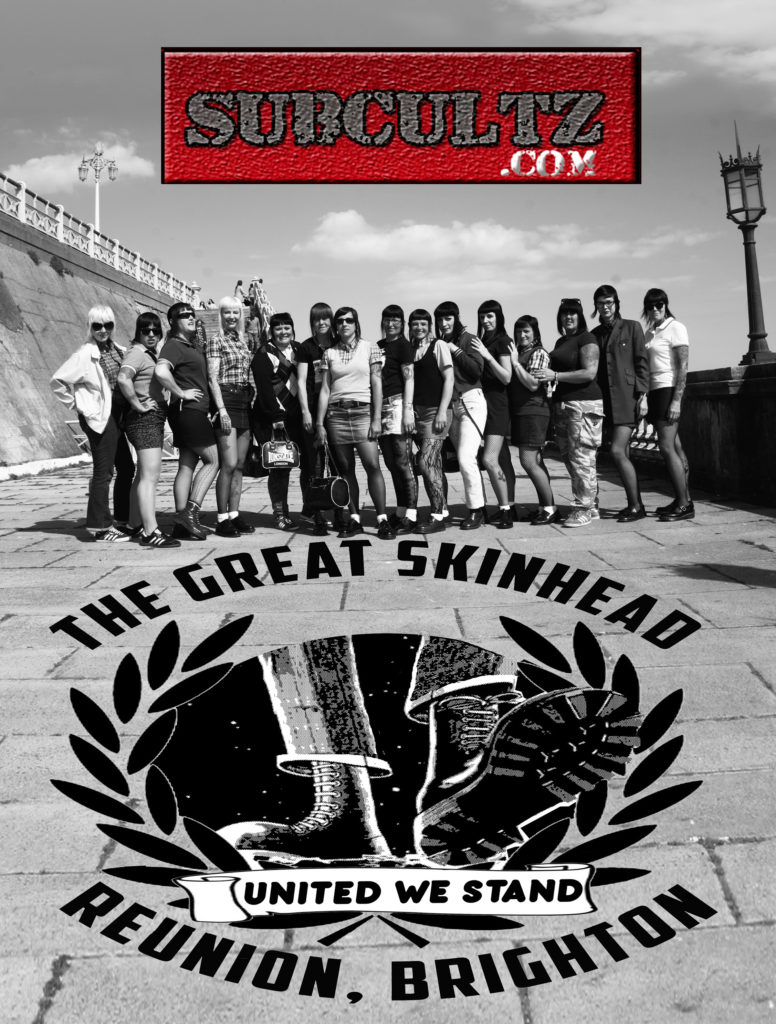
Andy is carrying a school-supplied acoustic guitar. ‘I want to be in a band when I’m a bit older.’ I ask him what his parents said about him becoming a skin? ‘Well,’ he pauses. ‘I walked in after my first crop. and my Dad goes, “Oh, what? You think you’re a trouble-maker now?” And our teacher, Mr Malinson, he sort of goes to me and him,’ pointing to Steve, “‘If I saw you two on the street, if I was a cop, I’d pick you up before two normal kids.” For sus, like. People can get the wrong idea because of the hair.’
‘My mum don’t like it,’ Steve says. ‘Thinks you’re going out just for trouble . . . Best ti be normal if you think about it. Then you don’t get beaten up by no one.’ Steve and Andy aim to keep out of trouble. That’s why they don’t go to gigs. ‘There’s trouble on the train. They won’t let you on ‘cos they think you’ll vandalise everything. On buses they can make you sit downstairs.’
Moved on, stopped, questioned, denied entrance – skinheads these boys reckon, have a lot to put up with. ‘Yeah, they get a hard time, especially from the police, and quite a few teachers. One teacher suspended a skin. He had a swastika shaved into his head. I think that’s bad as well,’ Andy says. ‘I think he should have gone home. He would have got into a lot of trouble with the coloured kids, anyway. He would’ve got beaten up. The school’s roughly half and half, a few more whites . . . ‘
They’re getting a bit fidgety. It’s 4.20 and the football is on, live from Rome, at 4.30.
Down through Somers Town, over the Euston Road (a territorial divide for the gangs round here), and again on into King’s Cross. Just down the road from the Midhope House, where Mark Dumsday lives, is a youth club called the Tonbridge Club. Open 6 to 10, six days a week, it’s the hang-out for local kids too young or too poor to go drinking and dancing. They come here to play table tennis, snooker and pinball, listen to records. Most of the boys here, too, are skinheads. One of them, Michael, tells me he’s up in court next week for not going to school. He’s 15. Why did he get a crop? ‘Dunno. Just like the music, reggae and ska. And I’m into me own band, play bass. Get the name of the band down. It’s called Youth Cult.’
Another skin, Eric McQueen, takes Bob Marley off the turntable and puts on the Sex Pistols single, Anarchy in the UK. Eric is living in a hostel for juvenile delinquents in Westbourne Grove. ‘Well, it started at primary school, see,’ he says. ‘I used to fight all the time. I went to a hostel in Chapel Market and then they put me in Stratford House, a remand home, for six months. From there I went to a community house. Spent a year there, and then I got a job. I’ve had seven jobs since I left school, in shops, factories, decorating, everything.’
And what’s the idea of this place he’s in now? ‘Sort your life out,’ he smiles. ‘It’s all right. Ain’t got many rules, except you got to be in by 12 on Saturdays.’ Eric is 18. He has only had his crop, which is dyed blond, for two months.
Eric tells a couple of young girls who’ve sidled up that he gets about £8 a day from his social worker. They look impressed. I ask him how he got the scar on his left ear? ‘Some nutter.’
Hugh Byrne, who’s also 18, has a crop which is starting to grow out. He’s out of work. ‘He’s a good artist,’ says one of the girls standing by a bar which sells Kit-Kats and Coke. ‘Skinhead is just the thing round this area,’ High says, with the air of someone bored with the whole idea. ‘Used to be a lot of mods round here too, ‘cos the star of Quadrophenia, Philip Daniels, used to live round here. Half the skins round here used to be punks or mods.’
One local skin gang, about 40 strong, have recently given it all up, Hugh says.’They’ve all changed to normal ‘cos they were always getting picked on and that. I used to get picked up by the Old Bill a lot.’ Is that why he’s letting his hair grow? ‘No. Not really. It’s only been two months. I can’t be bothered to get it cut.’
Post-skins. like Hugh, and his friend, Tony French, all describe themselves as having gone ‘normal’ once they’ve let their grow out. Tony French, who now looks like a King’s Road smoothie, used to be involved in all the gang feuds round here. ‘No reason,’ he says. ‘Something to do.’
Reasons? Anyone interested in reasons (for skins, for punks, for Rastas) should take a walk through the meaner city streets, then turn on the TV. ‘We want a riot.’ You must have heard the skinhead chants. ‘We are evil.’ The straight world, the Rastas call it Babylon, is threatened with style: a sneer, a strut, a beat that has soul . . .
The teenagers at the Tonbridge Club start drifting off home at around nine. Youth Cult are playing London Calling down in the basement.
article from 26 June, 1980 by Ian Walker.
Ian Walker

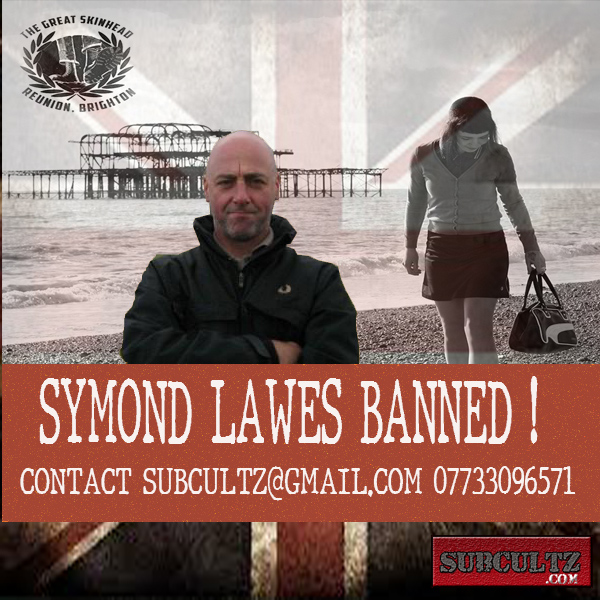 Symond Lawes
Symond Lawes 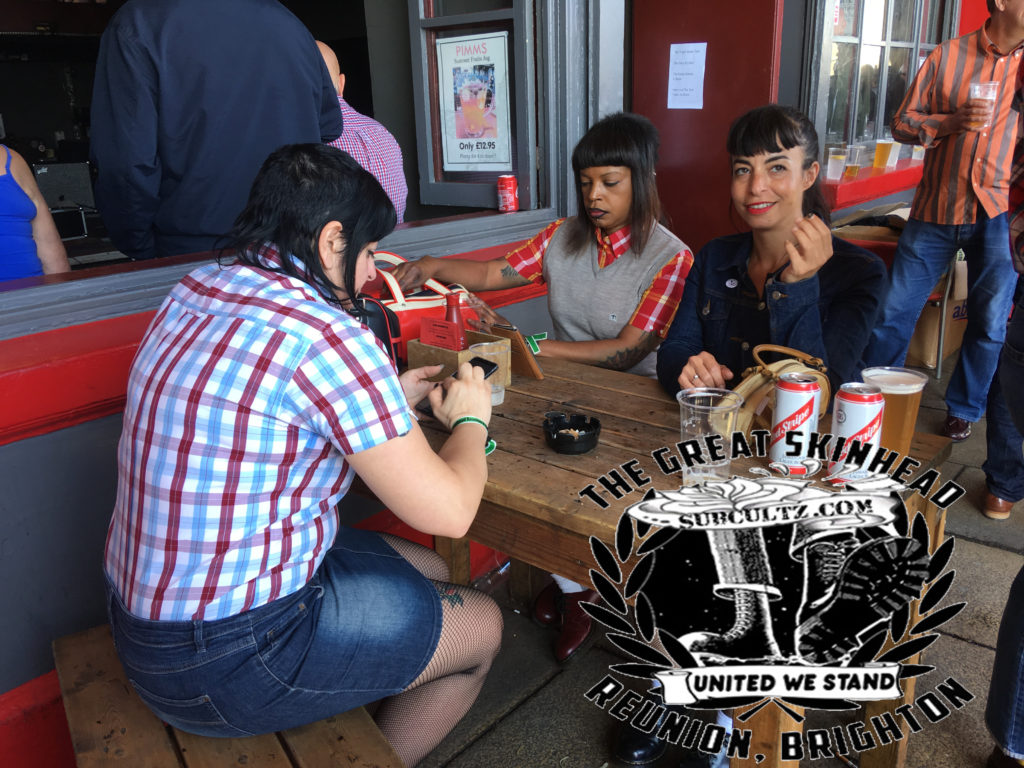
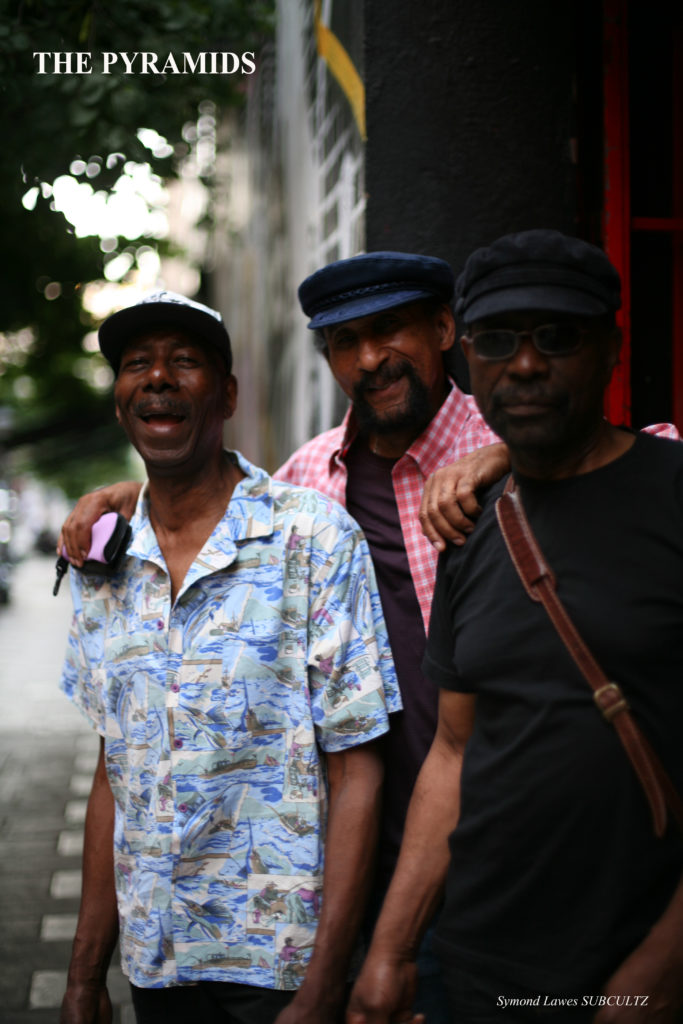
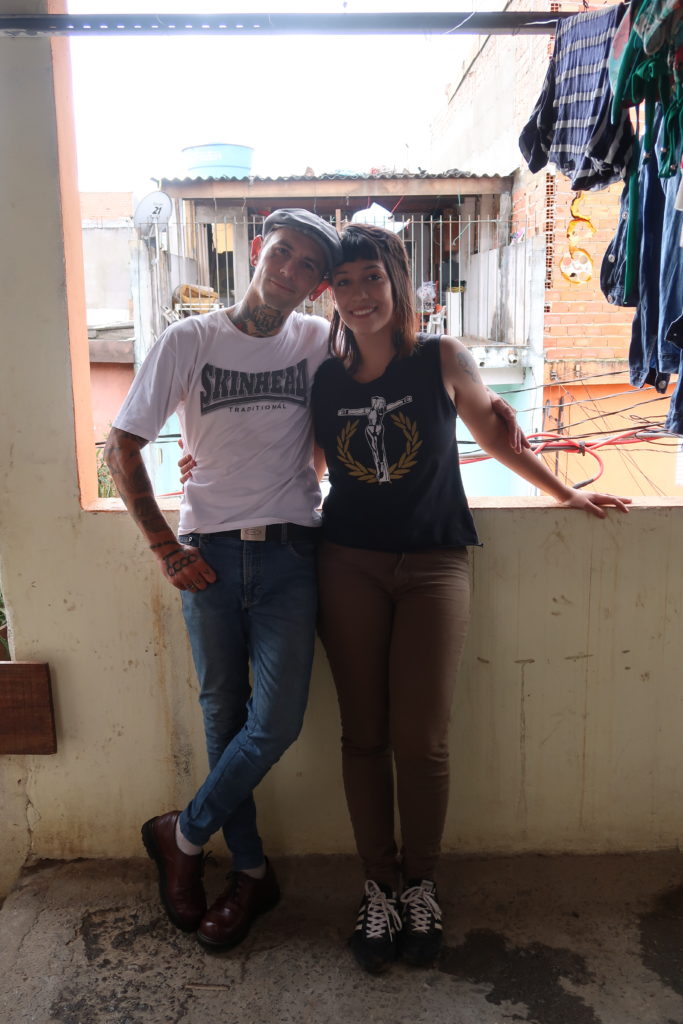 Isabelle Pradel Skinhead Girl, Sao Paulo Brazil banned from Facebook
Isabelle Pradel Skinhead Girl, Sao Paulo Brazil banned from Facebook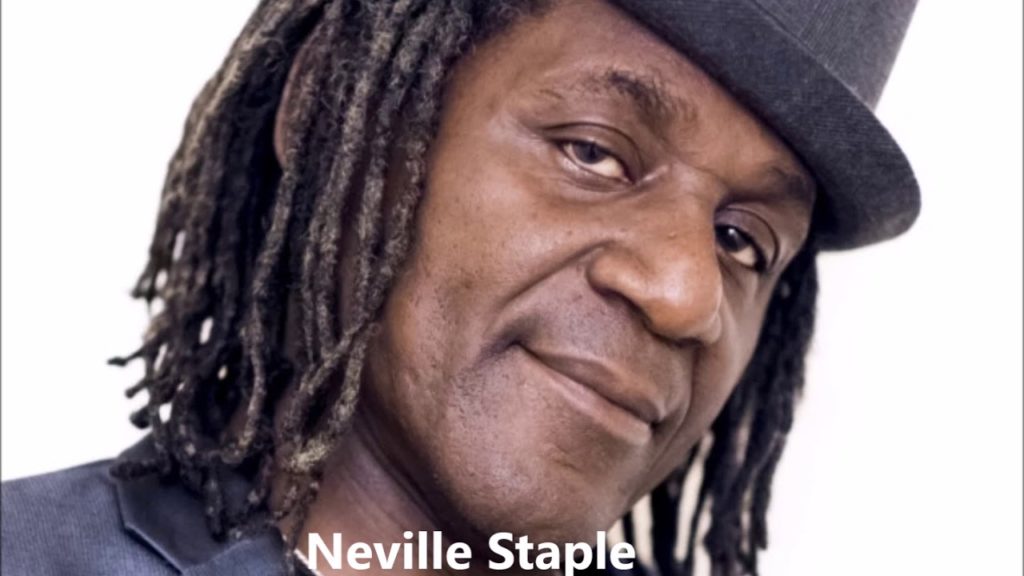
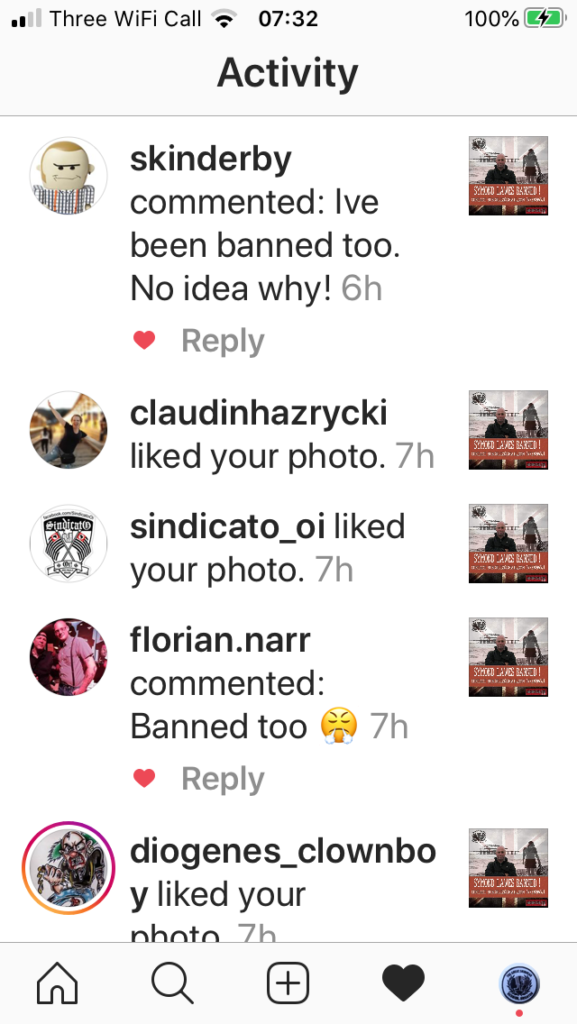 Instagram is awash with people banned from Facebook
Instagram is awash with people banned from Facebook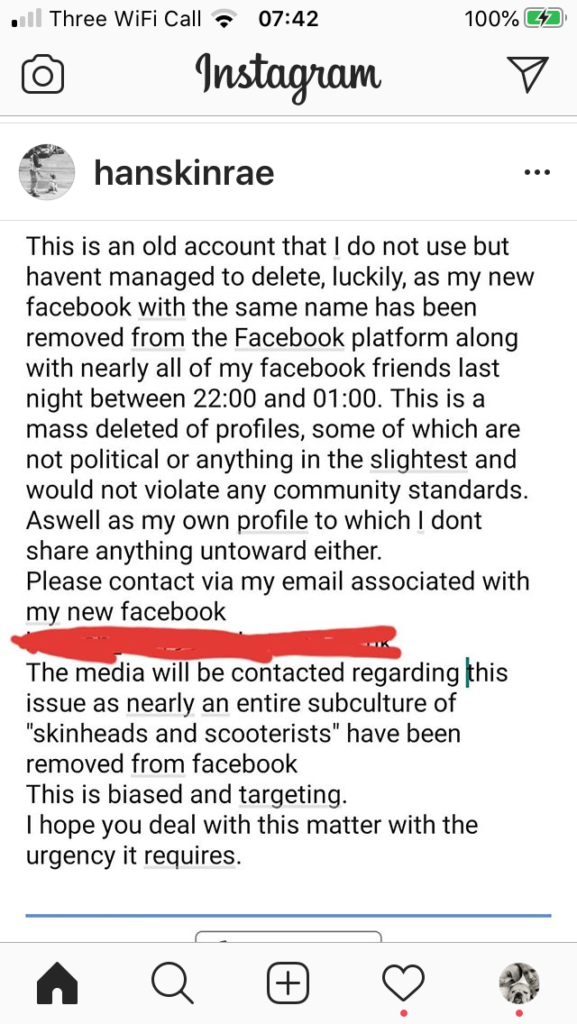 Instagram is full of people talking about losing their facebook profiles
Instagram is full of people talking about losing their facebook profiles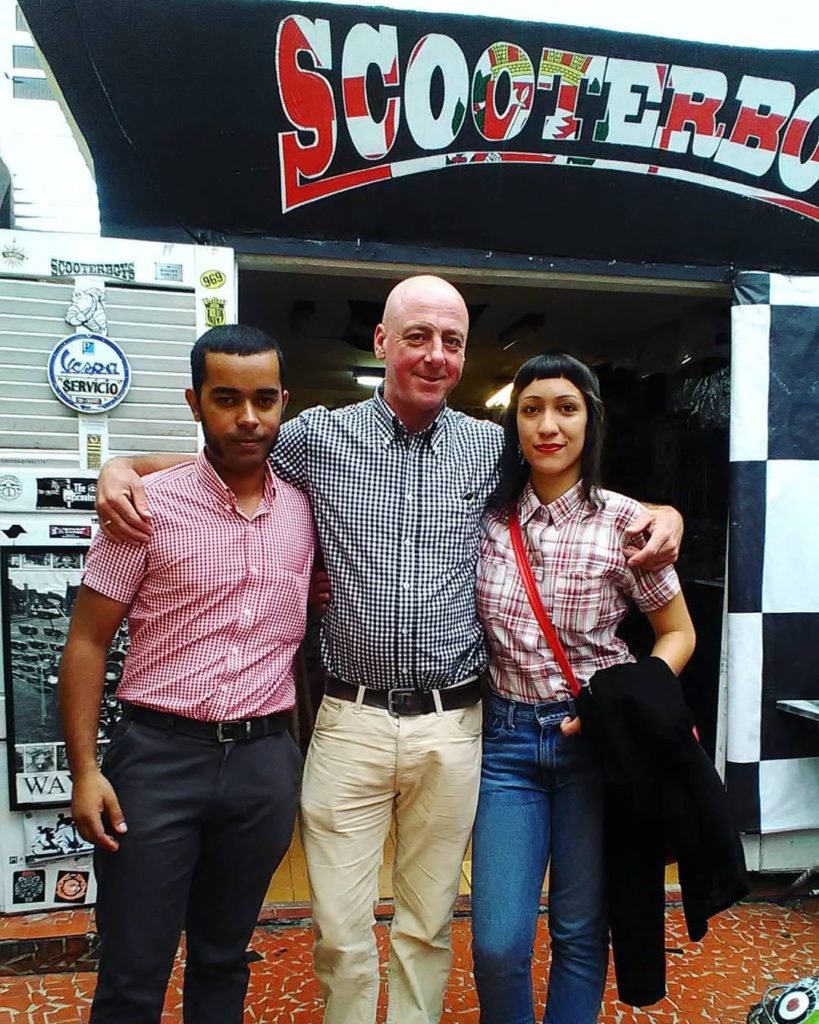 Skinheads in Sao Paulo Brazil
Skinheads in Sao Paulo Brazil  One of the biggest skinhead scenes now is in Bogota Colombia
One of the biggest skinhead scenes now is in Bogota Colombia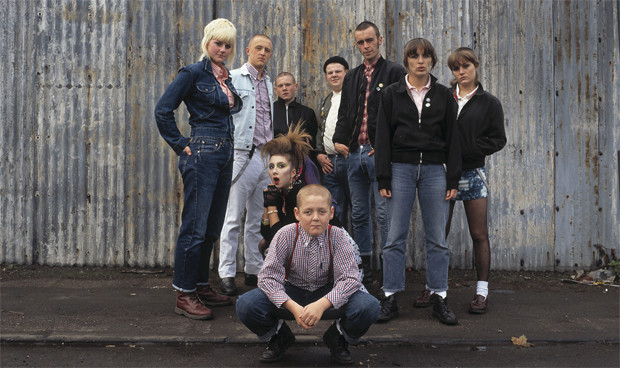
10/5/2020
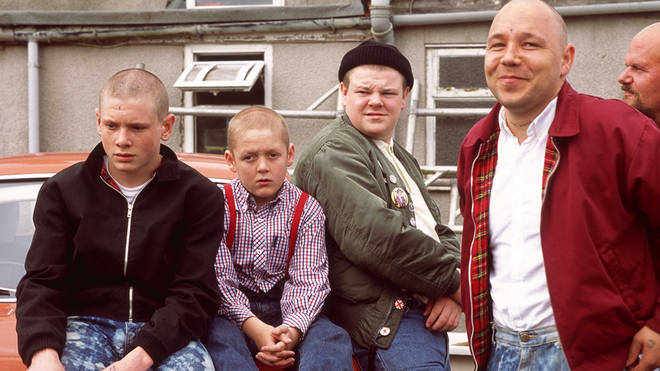
The director has revealed he’d like to to make another instalment of the series, which is set at the turn of the millennium.
Shane Meadows wants to do another series of This Is England.
The 47-year-old director – who previously helmed the 2006 film and its TV spin-offs – has revealed he’s eager to return to the series with a new instalment, set around the turn of the millennium.
Speaking to Andrew Shim – who played Milky in the series – in his Shimmy’s Corona Diaries YouTube series, Meadows shared: “I don’t know when but I’ve got This Is England ’00 in my head, the millennium one, because I sort of thought it would be nice, because when did we shoot the last one? Was it 2015, 2016?
“So, you’re obviously five years away and I don’t massively want to copy the film ideas, but if I went back I’d love to do a millennium one.”
READ MORE: This Is England Set For Final Film?

Meanwhile, Stephen Graham – who famously played the fearsome Combo in the franchise – has turned his hand to comedy in new Sky One sitcom Code 404, but admitted he wasn’t sure if he could pull it off.
Speaking during a special junket from lockdown he revealed: “At first, I was quite nervous, actually.
“I said to Danny [Mays], ‘I can’t do this mate, I don’t really know what to do here’. And he was great with me because he’s such a generous actor anyway and a lovely fella. He was like, just do what you do, play it normally… just find the truth in it. I was like, ‘Okay’. And then that’s when I kind of found my place in it.”
Stephen Graham also recently took part in an interview with The Chris Moyles Show and let Pippa show off her best Scouse accent:Pippa shows Stephen Graham her questionable scouse accent!Watch Pippa in action here.Share
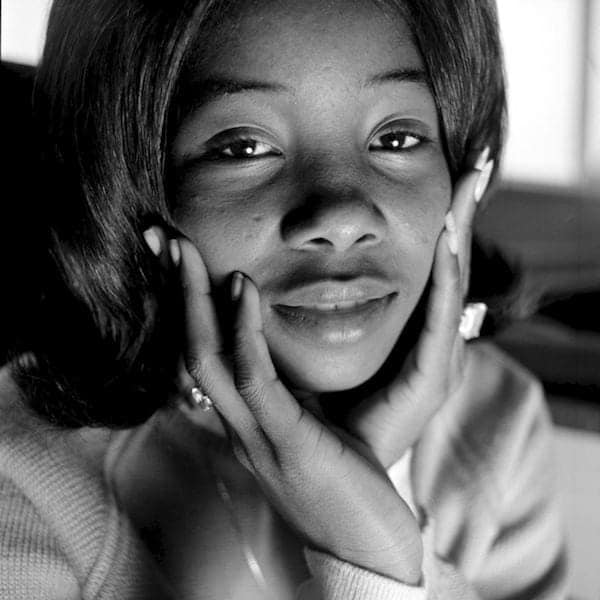

“To all friends of Jaelee, Jaelee has asked me to write this and I do so with the heaviest of hearts. Earlier this afternoon Jaelee’s mum, the beautiful and vivacious spirit that was Millie Small passed away. Millie suffered a stroke over the weekend after a suffering a serious haemorrhage in her brain and was taken to Charing Cross Hospital in London on Saturday. Unfortunately the haemorrhage was such that team at the hospital was unable to remove the liquid around her brain and her condition has unfortunately been in decline since Saturday. Earlier today her doctors took the decision to take her off life support as there was no chance of a recovery and she passed away this afternoon. The team at the hospital did a fantastic job to make sure she was comfortable and peaceful in her last few days and Jaelee was at her side until the very last moments. I saw Millie briefly at the start of lockdown from a safe distance when I dropped off some supplies for her; she was her usual effervescent self, full of warmth, smiles and life so this has come as a real shock. I’m sure Jaelee will want some time and space to come to terms with everything so if you have a message for her let me know and I will pass it on.”
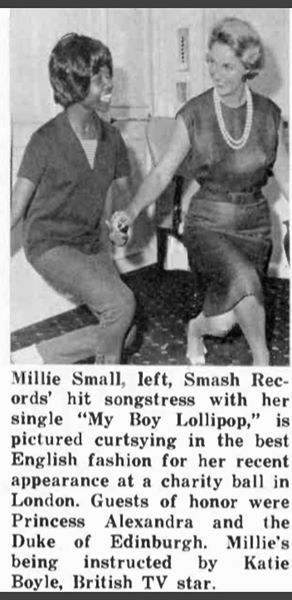
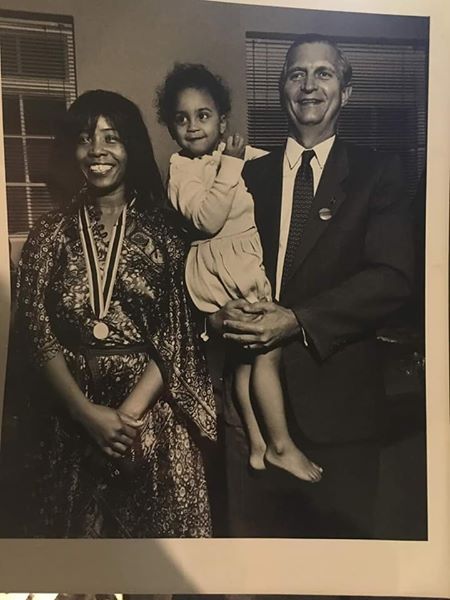
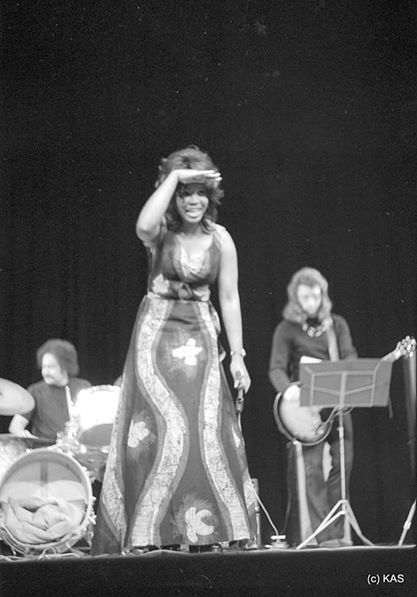
My Boy Lollypop was a favourite for many Skinheads in the UK a song many thought dedicated to them and sung by girls to their Skinhead Boyfriend for decades
The star was most famous for her hit single My Boy Lollipop, which reached number two in both the US and the UK in 1964.
It remains one of the biggest-selling ska songs of all time, with more than seven million sales.
Island Records founder Chris Blackwell announced her death and remembered her as “a sweet person… really special”.
It was Blackwell who brought Small to London in 1963 and produced her version of My Boy Lollipop, showcasing her childlike, high-pitched vocals.
“I would say she’s the person who took ska international because it was her first hit record,” he told the Jamaica Observer.
“It became a hit pretty much everywhere in the world. I went with her around the world because each of the territories wanted her to turn up and do TV shows and such, and it was just incredible how she handled it.
“She was such a sweet person, really a sweet person. Very funny, great sense of humour. She was really special,” said Blackwell.Skip Youtube post by El enano trapecista
Born Millicent Small in Clarendon, south Jamaica, she was one of seven brothers and five sisters, raised on the sugar plantation where her father was an overseer.
At the age of 12, she won a talent contest at the Palladium Theatre in Montego Bay; and by her teens, she was recording for Sir Coxone Dodd’s Studio One label in Kingston.
There, she teamed up with reggae singer Roy Panton, and they became one of the island’s most prolific duos, scoring a major hit with We’ll Meet.
Blackwell took an interest in the singer after releasing some of those records in the UK on his fledgling record label, Island, and brought her to London in 1963.
Small was enrolled at the Italia Conti Stage School for speech training and dancing lessons; and she toured the UK before cutting My Boy Lollipop with a group of London session musicians (Small claimed Rod Stewart played the harmonica solo, but he has denied being present at the recording).
Released in February 1964, it made her an international star, and helped popularise ska music around the world.
“It is the ska equivalent of Elvis’ Heartbreak Hotel or the Sex Pistols’ God Save The Queen – the disc that popularised a sound previously considered to be on the margins of mainstream consciousness,” wrote music historian Laurence Cane-Honeysett in Record Collector magazine.
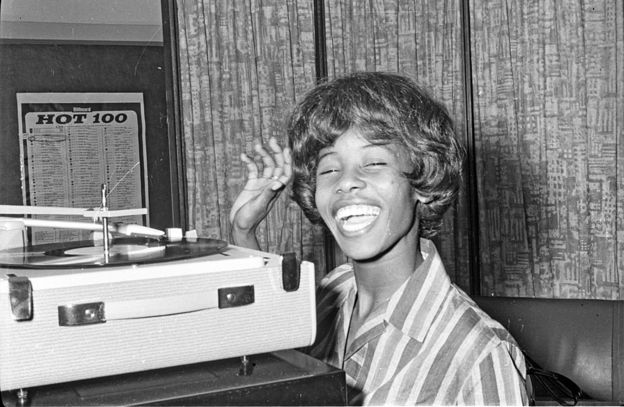
However, Small was unable to replicate the success of My Boy Lollipop, scoring only one further hit, a soundalike called Sweet William, later the same year.
But she continued to tour and record, and appeared frequently on 1960s pop shows like Juke Box Jury and Ready Steady Go.
“My life seemed very normal to me – even though I was only 17, I took fame in its stride,” she told the Express in 2016.
After leaving Island in 1970, she recorded for legendary reggae label Trojan Records, where her first single was a cover of Nick Drake’s Mayfair.
However, it was the b-side that attracted greater attention. Called Enoch Power, it was a defiant response to Enoch Powell’s inflammatory, anti-immigration “Rivers of Blood” speech that captured the mood of the UK’s Caribbean population.Skip Youtube post by lanman31337
Soon after that single, and the accompanying album Time Will Tell, Small stepped away from music, saying “it was the end of the dream and it felt like the right time”.
In later years, she lived in Singapore and New Zealand before returning to London, where she concentrated on writing, painting and raising her daughter.
When My Boy Lollipop was re-released in 1987 to mark Island Records’ 25th anniversary, the singer gave a rare interview to Thames TV, where she revealed she had, at one point, been penniless and sleeping rough in London.
However, she took the hard times in good grace, explaining: “That’s all experience. It was great. I didn’t worry because I knew what I was doing.
“I saw how the other half live. It’s something I chose to do.”
In 2011, Jamaica’s Governor-General made Small a Commander in the Order of Distinction for her contribution to the Jamaican music industry.
The singer is survived by her daughter, Joan, who is also a musician based in London.
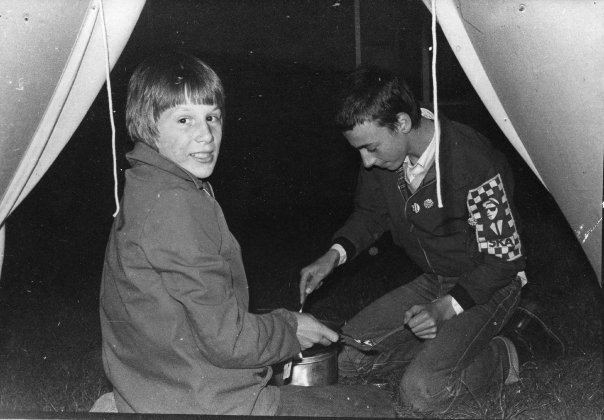
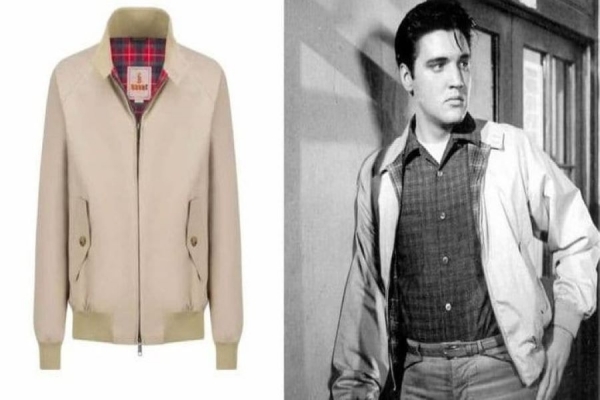
When, it comes to the Harrington Jacket, I feel a sense of pride. I am from the North West of England. I was born in Salford and was brought up in Greater Manchester. For those that don’t know – the versatile and simply smart casual jacket originated in the form as we know it, in Manchester, the metropolis that was at the centre of England’s textile industry and had been, since the industrial revolution.
I mean, if you look at the Twentieth century, and if you had to pick out one British-designed garment that has transcended numerous decades, and had earned its right as a favourite amongst sportsmen and Hollywood greats alike, and infiltrated its way into the wardrobe of fringe subcultures, the Harrington jacket, simply stands taller than any other.

It is impossible not to talk about the Harrington jacket and not begin by paying homage to its originators of the style of this classic and extremely wearable garment, Baracuta.
Baracuta was founded in 1937 by James and Isaac Miller in Manchester, they “designed the G9 (The G stands for Golf) when they set out to create a functional rainproof jacket for the English modern working man,”
The company is inextricably linked to the Harrington jacket. In the same year, it was founded, the brand released the iconic G9, which then only became known as the ‘Harrington’ after the rise of US TV soap opera Peyton Place, in which a character – Rodney Harrington played by Ryan O’Neal – would often wear the style.
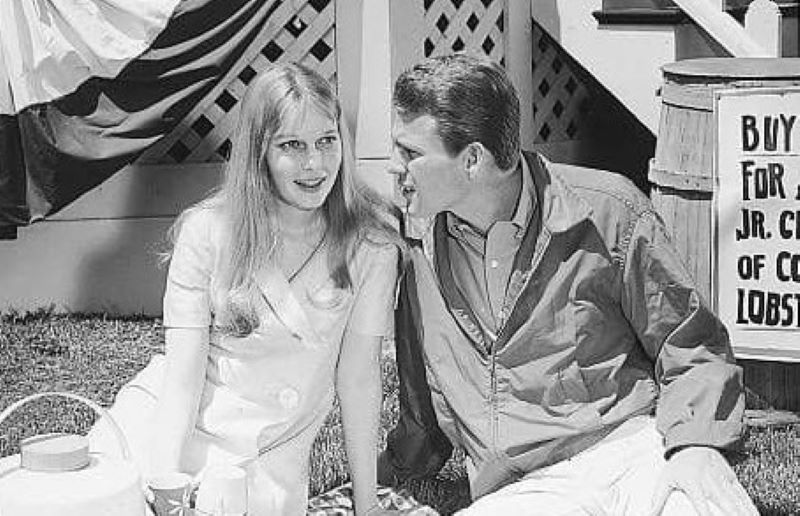
John Simons, the purveyor of American classic styles is considered to be the most influential man in Britain with regards to Ivy Style, and quality garments plays a part in this tale of the Harrington jacket. As aforementioned, there was a character in Peyton Place played by Ryan O’Neal called Rodney Harrington. Legend has it, that Simons would handwrite cards to go in the window next to the garments on show. He would write for example “The Rodney Harrington Jacket” when displaying a Baracuta G9 in his shop window. After doing this a few times the writing of the name was shortened simply to “The Harrington”

The Harrington jacket’s original purpose was to be worn in the great outdoors. Traditionally, its shell is a water-repellent poly-cotton blend with an umbrella-inspired vent on the back to aid the run-off of rainwater so one’s trousers don’t get wet. There are also two slanted flap pockets with concealed buttons and an elasticated waistband and cuffs to keep you dry. The collar is a double-button, stand-up, Mandarin-esque collar which can be snapped shut to stop the incoming rain. There is also a central fastening zip. Overall, it’s incredibly lightweight, yet its signature element is the tartan lining of Lord Lovat, a British commando and chief of the Fraser Clan, who gave Baracuta’s founding brothers permission to use his family’s colours in 1938. Since then, this has remained an unchanged feature on Baracuta Harringtons. Why? Because according to Paul Harvey, a designer at Baracuta, “firstly it must be simple and not follow fashion. Secondly, proportions and balance are vital to such a simple design. Thirdly, it has to feel right. The simplicity of the jacket asks nothing of you and that means you feel totally comfortable wearing it.”
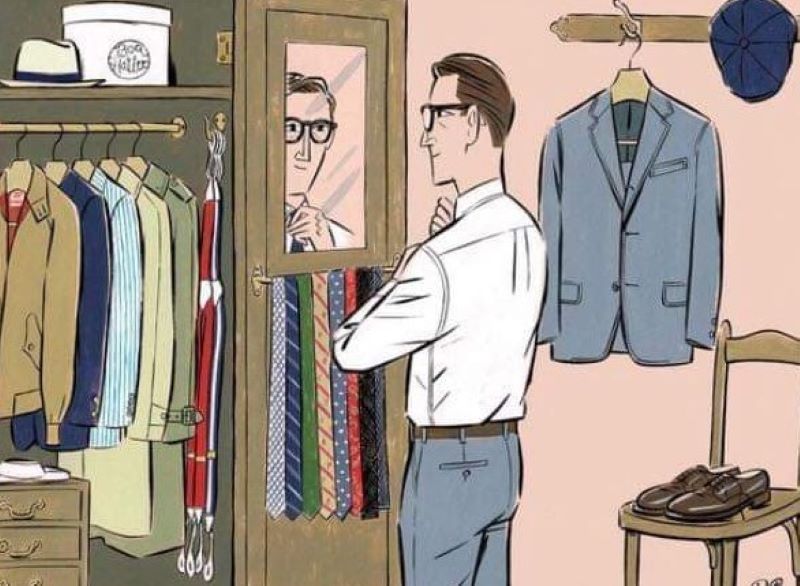
It’s a simple design and the look has been worn by many that have become style icons. Movie and music legends alike have been known to wear Harrington jackets. It’s no surprise that stylists from many different backgrounds have gravitated towards wearing a G9, or more recently Harrington jackets that have been manufactured by other manufacturers. For it is a testament to this garment that it has been copied widely, as its influence is such that it is the epitome of cool. When you see James Dean, Elvis Presley, Frank Sinatra, and the King of Cool Steve McQueen wearing a Baracuta, it makes you want to buy into that coolness. When you see the Mods, Skinheads, Britpoppers and indie artists looking cool in Harrington’s you acknowledge that sense of style for an easy to wear, sharp and understated look.
From cheaper ones to ones that are much more expensive. They are in various different fabrics. I have three Baracuta’s. One is in the traditional water repellent fabric, one that is in Chambray cotton, and another is a rare lightweight summer one, that is in red polyester and has a mesh Fraser tartan lining. I also have a Harrington style jacket by Two Stoned, that has the legend “The Two Stoned Rodney Harrington Style Jacket” on the label, and had been purposefully aged to look vintage and has several “Northern Soul” patches on it. I have a vintage US college version of a Harrington made by Haband of Patterson, New Jersey which is more like the Baracuta G4, and a black Leather G9 style Harrington I wear in the autumn and winter that is made by Charles Caine.
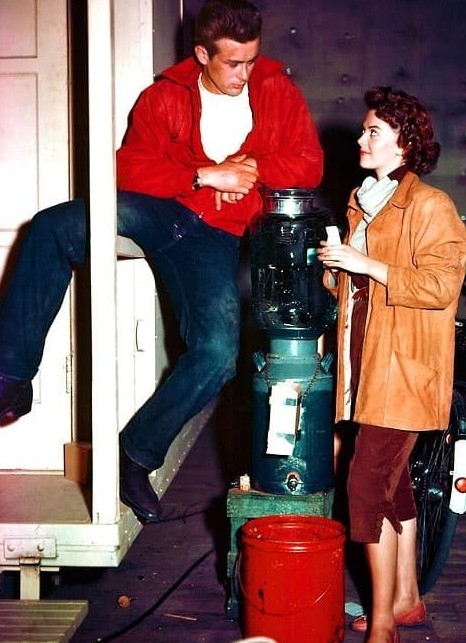
Harrington’s are functional, comfortable, and timeless. The functionality is what appeals to most men, and the knowledge that when you slip one on, you instantly join that roll call of the cool. Of course – Harrington’s look great on women also. As when the fairer sex chooses to wear masculine clothing to subvert style norms, so they choose items that men have looked up to and admired. In affect reaffirming that they too can join that roll call, and show that they also like the functionality, comfort, and design that has a history that is broad, long and full of cultural identity.
Harrington’s are here to stay for it is the jacket that is made for both work and play.

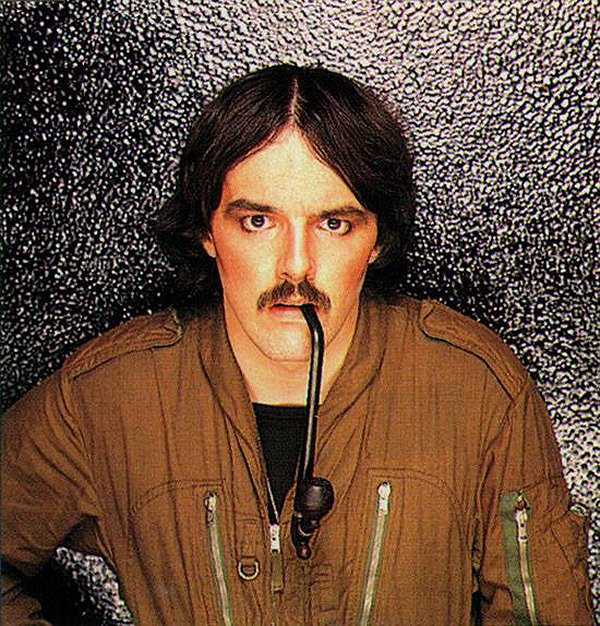

We are deeply and profoundly saddened to announce the untimely passing of keyboard legend Dave Greenfield on the evening of 3rd May 2020. Following a stay in hospital for heart problems, Dave tested positive for the Covid-19 virus last Sunday but he sadly lost his battle last night. Dave had been an ever present in the band since joining in late 1975 and his keyboard wizardry was world-renowned over his 45 year career in The Stranglers. Dave was a lovable, friendly and eccentric character who always had time to chat.
We have received the following tributes from Dave’s fellow band members JJ, Jet and Baz as well as Sil the band’s manager:
“On the evening of Sunday May 3rd my great friend and longstanding colleague of 45 years, the musical genius that was Dave Greenfield, passed away as one of the victims of the Great Pandemic of 2020. All of us in the worldwide Stranglers’ family grieve and send our sincerest condolences to Pam.” – JJ Burnel
“We have just lost a dear friend and music genius, and so has the whole world. Dave was a complete natural in music. Together, we toured the globe endlessly and it was clear he was adored by millions. A huge talent, a great loss, he is dearly missed.” – Jet Black
“We lost a true innovator, musical legend, and one of my dearest friends today. The word genius is bandied around far too easily in this day and age, but Dave Greenfield certainly was one. We stood together on the same side of the stage for 20 years, laughed, joked and shared our lives in the way that only band mates can. I’ll miss him forever. Our thoughts and hearts are with his wife Pam, and to the millions of fans who worshipped at his altar, he’ll never be equalled.” – Baz Warne
“We are all in shock, Dave was a kind, generous soul who had time for anyone and everyone and it has been my privilege to have known him as both a close friend, his tech and manager for over 40 years. Our thoughts are with Pam at this sad time” – Sil Willcox
He is survived by his wife Pam and we ask you to respect Pam’s privacy at this very sad time.
Fly straight Mr G, fond adieu xx
very sad news, another punk legend gone. Peaches was one of the first 7″ singles i ever owned (nicked off my sister) and one of the very first to have swear words on it. for a 12 year old kid in 1977 oh S**t and Bummer were oh so shocking. Then Duchess still stands as one of my all time favourite punk songs. RIP to a Legend
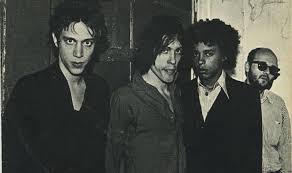
by Luca Morettini Paracucchi -April 9, 20200185
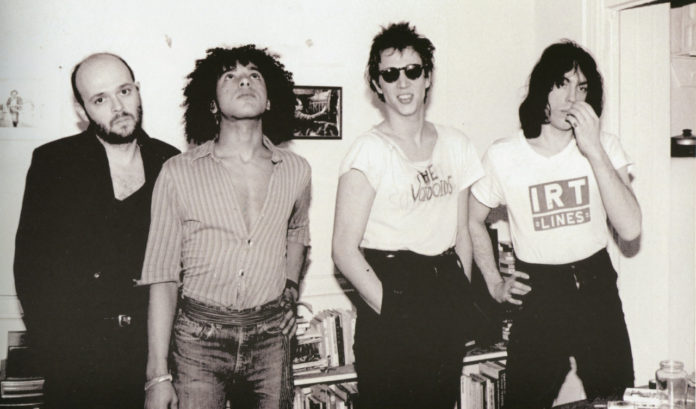
“More Heroes” is a column dedicated to the discovery of the biggest names that have made the history of punk, many of which are not adequately known as they deserve. Today the spotlight is on Richard Hell & The Voidoids.
Richard Lester Voices “Hell” Meyers was born in New York in 1976. Although active for a short time, they are one of the most influential groups of the first wave of American punk. Hell (whose pseudonym is inspired by the opera “A Season In Hell” by the French poet Arthur Rimbaud) had previously been bassist and founder of two other big names of those years: Television and Heartbreakers . Both experiences ended due to the constant clashes with those of those bands who will be the leaders, respectively Tom Verlaine and Johnny Thunders.
Finally, the third attempt to start a band proves to be the right one and thus the Richard Hell & The Voidoids are born. Accompanying the bassist are guitarists Robert Quine and Ivan Julian and drummer Marc Bell.
The group signs a contract with the Sire label and in 1977 they debuted with the epochal “Blank Generation” , a milestone of the first American punk which sees in the title track a real generational anthem and of all punk (song already played in the times of Television and Heartbreakers) in which Hell’s poetic vein and literary influences emerge. Noteworthy is also the work of Quine and Julian in which their passion for rock’n’roll and jazz emerges.

Immediately after the release of the album, the band goes through a difficult period in which they abuse drugs. They participate in a tour of England by shoulder to the Clash which however will leave them dissatisfied with the English punk scene. The internal balance between the various members does not hold and in 1978 Bell left the group to join the Ramones, assuming the pseudonym of Marky Ramone. In 1979, on drums Frank Mauro released the 45 rpm “The Kid With The Replaceable Head” . Shortly thereafter, Julian also leaves, disappearing from the music scene.
We have to wait until 1982 for the second rehearsal of Richard Hell & The Voidoids, who now see Fred Maher on drums and Juan “Naux” Maciel on the second guitar. But ” Destiny Street” , released for the Red Star label, however good a album it becomes, becomes the last piece of the band’s history which effectively ends its adventure in the same year. Some reunions will follow during the 90s, but never with the original lineup. The latter met once in 2000 to record the unreleased track “Oh” which will be included in a compilation.
Over the years Hell has ventured as a writer, poet and sometimes actor acting in several films, including “Desperately Seeking Susan” with Madonna. Very few record rehearsals, following his retirement from the world in music.
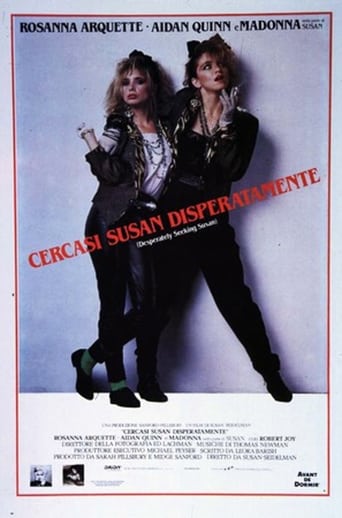
In 1992 he was in the supergroup named Dim Stars where he found Quine and which included Don Fleming of Gumball and Steve Shelley and Thurston Moore of Sonic Youth.
Quine has collaborated with many artists, first of all Lou Reed. He committed suicide in 2004 with an overdose of heroin. The previous year, his wife’s disappearance had led him into severe depression.
Richard Hell is considered by many to be the inventor of the famous punk look made of bristly hair, studs, chains and ragged clothes. Look taken from Malcom McLaren (manager of the Sex Pistols) and his wife, the stylist Vivienne Westwood.
In 1980 the film “Blank Generation” was released starring Hell, the band and a young Carole Bouquet.
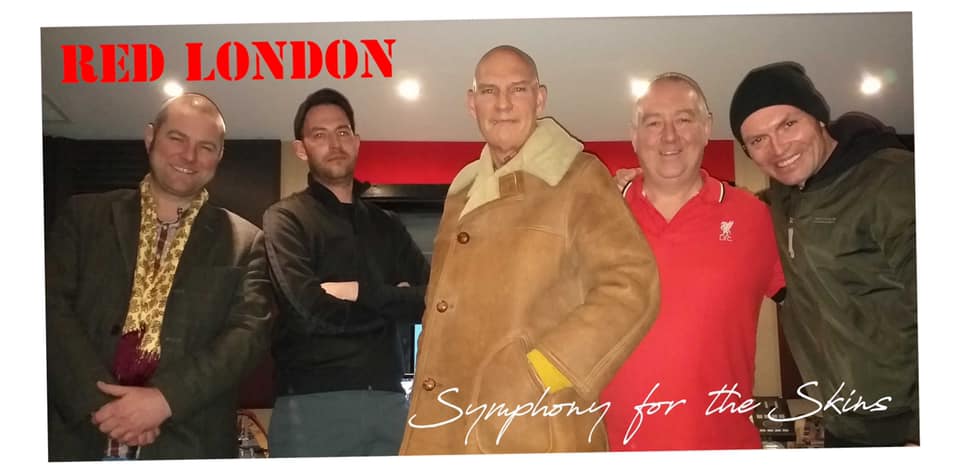
“this is England”
Year: 1984
City: Sunderland
Label: Razor
Format: CD, LP
Tracks: 13
Time: 34 min.
Genre: rock
Style: Oi!


RED LONDON is an English punk band formed in Sunderland in 1981, influenced by The Clash, Angelic Upstarts and The Jam. The band named themselves after a Sham 69 song. By 1983 they were signed to Razor Records. Their first release was the “Sten Guns in Sunderland” EP in 1983 followed by the “This is England” LP in 1984. Since then they have recorded for various labels both in the UK and abroad, and toured Europe including Germany, Poland, Belgium, Holland, France, Italy, and Spain as well as playing occasional gigs in England. Nowadays the band play some concerts from time to time. The release we have here was made by the label “Step-1” and include the first EP plus the debut LP. Is probably the best known work of the band, but Red London made more albums very recommended and always combining Oi! music with melodic voices and political lyrics. The four members declared themselves as socialist, libertarian and internationalist, inspired by the british SWP. Record label called “RedStar 73” has made the first re-issue on vinyl format and If somebody wants to buy it can go HERE. Later in 2016 was a new re-issue with remastered sound and some changes in the artwork made through italian label “Radiation Ressiues” just on LP format. Red London disbanded in 2002 and they are come back in 2018, touring in UK and Europe. Discogs , Lastfm , Download , Myspace , Facebook , Wikipedia


When I was a teenager, I often went to see a friend’s punk band play shows at an all-ages basement bar in Guelph.
He was a year younger than me, played bass, and had a bright green mohawk that stood about a foot high. The singer was a bit older and went to a different school; he wore his hair in liberty spikes. Most of the kids who went to these shows had the types of hairstyles that required Elmer’s glue to make stand on end, but not me: I had blonde highlights and a bob.
When you’re a teenager, the way you style yourself assigns you membership into a tribe that usually corresponds with what type of music you like, but at the punk shows I went to, this coding didn’t necessarily apply. As soon as I paid my cover and walked downstairs, I belonged. Punk rock is good like that, or at least it’s supposed to be: as long as you categorize yourself as some type of outsider, you’re part of the scene. Punk rock is always there for you. So it’s not hard to declare an unwavering loyalty to the scene, the fans and — most importantly — the people in the bands that comprise it.
On Thursday, Toronto’s Mod Club announced that it would be cancelling an upcoming show by punk group The Casualties due to allegations of rape against the band’s singer, Jorge Herrera. The cancellations are nothing new. A couple months after The Casualties announced a Canadian tour, 13 dates in total have been scrapped.
Allegations about Herrera have circulated for years, most notably in the form of a blog post on the website Put Your Damn Pants On by a woman named Beth who claims she was raped by Herrera when she was 16 years old, and he was about 26. Since then, a number of websites and blogs have been flooded with the comments and responses of those who claim similar experiences with Herrera; one Tumblr page compiled a list of 28 victims.
STORY CONTINUES BELOW
The backlash to these allegations has been toxic. The band’s management has used a particularly heinous line of defence, claiming that it’s NOT VERY PUNK ROCK to believe the women accusing Herrera of rape: “Unfortunately, people have been quick to judge and have not taken the time to think that they are not only slandering a singer from a punk band, but also a father, husband and family man,” a statement on the Casualties’ Facebook page read earlier this week.
“The mob has lit the torches and wants to see blood. Not a thought is wasted that it could hurt an innocent,” the band said in a statement in February. “We will not stand by while an innocent man’s life is being ruined. The only thing Jorge can be found guilty of is playing in a punk band.”
The fans are right there with them, maintaining that there’s a difference between being punk and being capable of rape. “Stay strong and stay f–kin’ punk y’all,” wrote one fan, while another assured the group that “The real punx we gonna stay with you guys!” Worst of all: “I just wish that more energy were used to protest the real culprits of misogyny and sexism, rather than punk bands,” a commenter wrote, as if the two are mutually exclusive.
A similar rationale permeates the discussion surrounding Bill Cosby. In her defense of him, Cosby’s former co-star Phylicia Rashad evoked the comedian’s “legacy” as a champion of diversity. Jill Scott did the same (though she distanced herself from her remarks recently), as did rapper Chuck D just a few weeks ago. Surely, hundreds of thousands of people who grew up with Bill Cosby thought the same: that a childhood hero, a moral arbiter, a beloved comedian with a proud legacy as a Black entertainer could not also be a monster, because if he is, what does that say about all of us who loved him?
When a scheduled NXNE concert by rapper Action Bronson was yanked off a public stage in downtown Toronto due to a petition crying foul over his misogynistic lyrics, the outcry was similar, but more simplistic: if you don’t want to hear it, just stay home. “It does seem like you’re trying to placate a bunch of soccer moms instead of your actual target demographic by booking the cleanest rapper you could think of,” a comment under NXNE’s announcement of Shad as Bronson’s replacement during the fest. “What the hell,” another said. “This is Toronto. It’s music. It’s art. If someone is offended well … f–k em. They don’t have to be there.”
The comments aren’t just an attempt to silence those standing up against misogyny and sexism, but a shaming: how dare you call into question something I believe in? How dare you take this away from me?
I don’t really like The Casualties; my experience with punk rock was always a little wimpy. But growing up, I drifted in and out of the punk scene in my hometown because even if I never felt quite like I was part of it there was no sense that I was unwelcome. Everyone I ran into at shows was a little bit of a weirdo like me, and they were there because it was a supportive environment. And I knew a lot of people who liked The Casualties.
But you can be an outcast — and speak for outcasts — and still do garbage things. Punks aren’t just punks; they’re people. And anyway, it’s not like the punk rock community is immune to the pratfalls that pervade every other community.
It can be difficult to reconcile that our heroes, mentors and idols do terrible things, not least of all because of a sense that their wrongdoings are somehow reflective of ourselves. And so the impulse to doubt or lash out against accusations is sometimes born of an impulse to keep ourselves comfortable. It’s an impulse that is, by definition, harmfully closed-minded. And that’s not very punk rock.
The Casualties were formed in 1990, with original members Jorge Herrera (vocals), Hank (guitar), Colin Wolf (vocals), Mark Yoshitomi (bass) and Yureesh Hooker (drums). The members aimed to return to what they viewed as the “golden era” of street punk, embodied by bands such as The Exploited and Charged GBH which they believed had disappeared by 1985.[3] During the early years, the lineup was fluid, with several changes.
In early 1991 Hank left the band, to be replaced by Fred Backus on guitar to record Political Sin in March 1991 for the Benefit for Beer compilation.[4] Soon more changes were in the works, with new guitarist Fred heading off to school. C Squat’s Scott temporarily filled Fred’s shoes until he returned a short time later. During this period, guitarist Hank filled in for a couple of shows, and Steve Distraught also played briefly with the group on second guitar. The Casualties stabilized long enough to record the first demo in the fall of 1991 and the 40 oz Casualty EP in the spring of 1992, and was building up a fan base in their hometown of New York City. At the end of 1992, Mark and Fred left the band and were replaced by Mike Roberts on bass and Jake Kolatis on the guitar, followed by the departure of Yureesh and Colin in 1994, to be replaced on drums by Shawn, while the band went down to a single vocalist.[1994 sees the recording of the 4 song EP, Drinking Is Our Way Of Life, however it would not be released. The songs would later appear on the Casualties “early years 1990-1995” CD in 1999. In 1995, the band’s second release, the 4 track A Fuckin’ Way Of Life E.P. was released on Eyeball Records. After recording A Fuckin’ Way of Life, Shawn left the band, and Marc Eggers (nicknamed Meggers) of the Rivits became the regular drummer. The line-up of Jorge, Jake, Mike and Meggers continued until 1997.
In 1996 the Casualties became the first American band to appear at the “Holidays in the Sun” Festival in London. 1997 saw the release of the band’s debut album, For the Punx is released on Tribal War Records, and the band embarks on its first American tour with The Varukers. Mike (the bassist) left the band in 1998, to be replaced with Johnny Rosado, from The Krays. They released their second LP that year, Underground Army, and begin a world tour.